For more information and search capabilities visit: Lessons Main Index Page

"Hearing The Changes" is knowing what the chords of a song or chord progression are and when they change. This lesson gets you on the road to developing this ability. This involves know the chords of the keys and scales that are used for common progressions and songs. And the ability to recognize the sound of intervals, the distance between intervals.
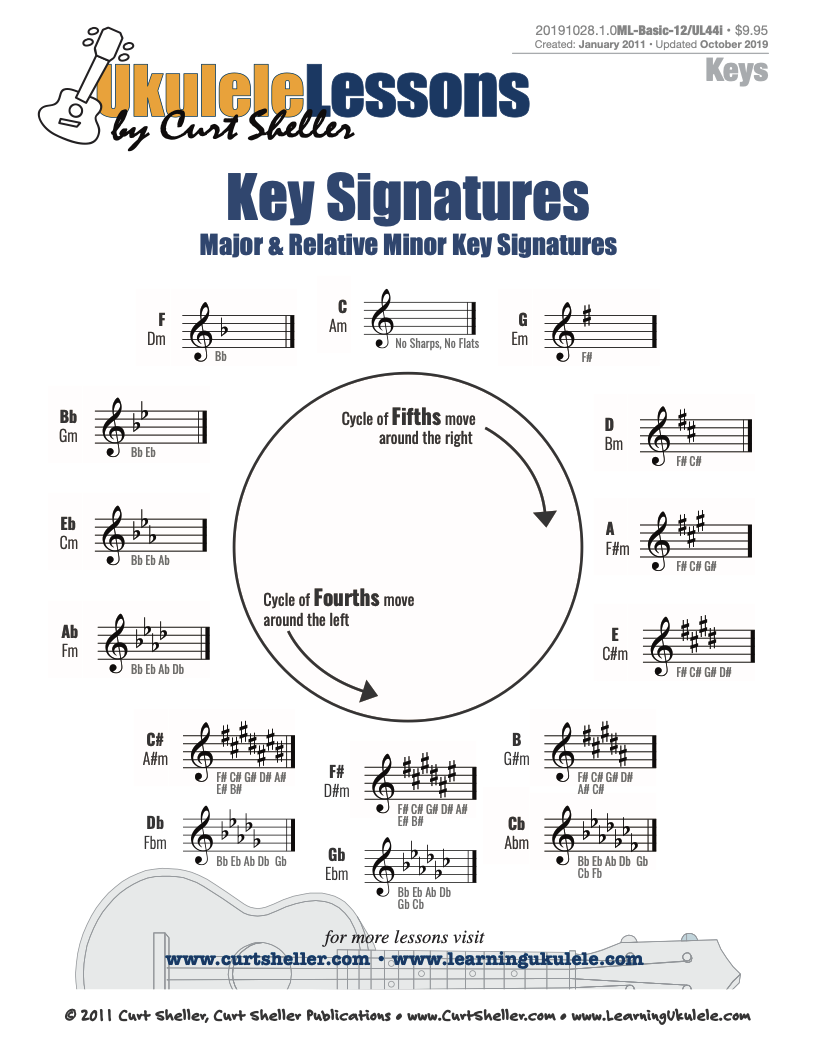
Traditional key signatures provide a wealth of information that can enhance our understanding of music and its underlying principles.
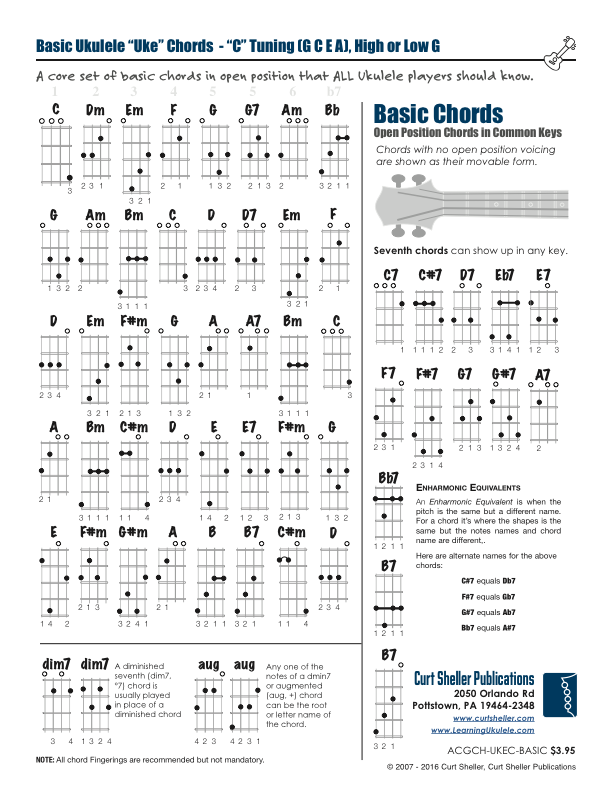
A core set of basic ukulele chords that ALL Ukulele players should know in the five common keys of C, G, D, A and E. With the possible seventh chords for the same common keys. The chart is organized in common keys and covers basic chords in these keys.
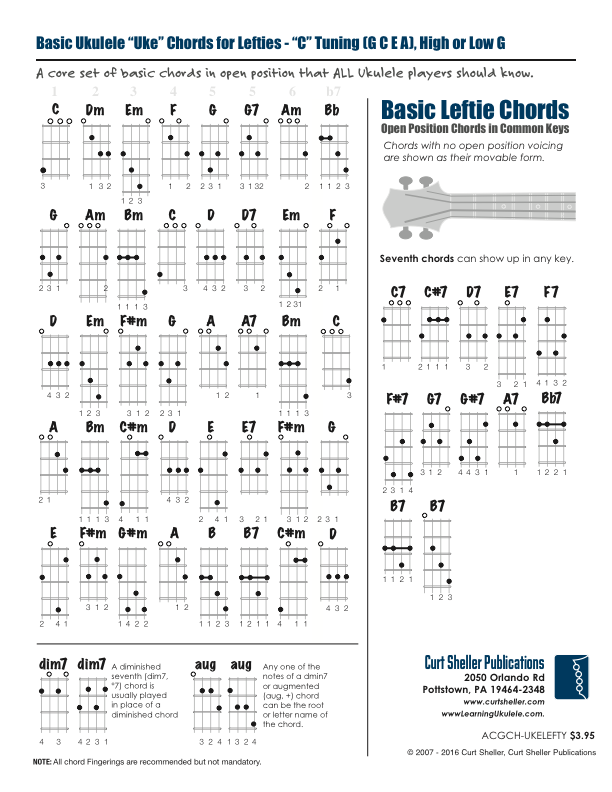
A core set of basic ukulele chords that ALL Left Handed Ukulele players should know in the five common keys of C, G, D, A and E. With the possible seventh chords for the same common keys. The chart is organized in common keys and covers basic chords in these keys.
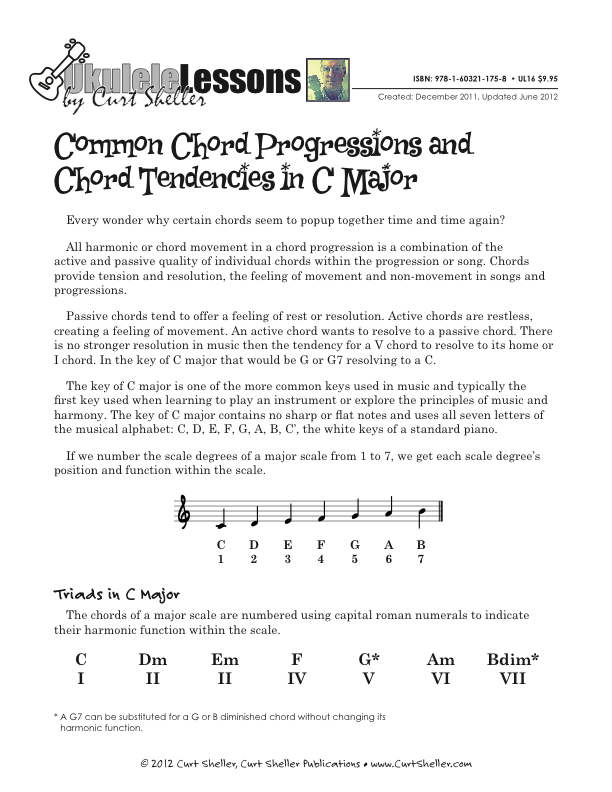
Every wonder why certain chords seem to popup together time and time again? All harmonic or chord movement in a chord progression is a combination of the active and passive quality of individual chords within the progression or song. Chords provide tension and resolution, the feeling of movement and non-movement in songs and progressions.
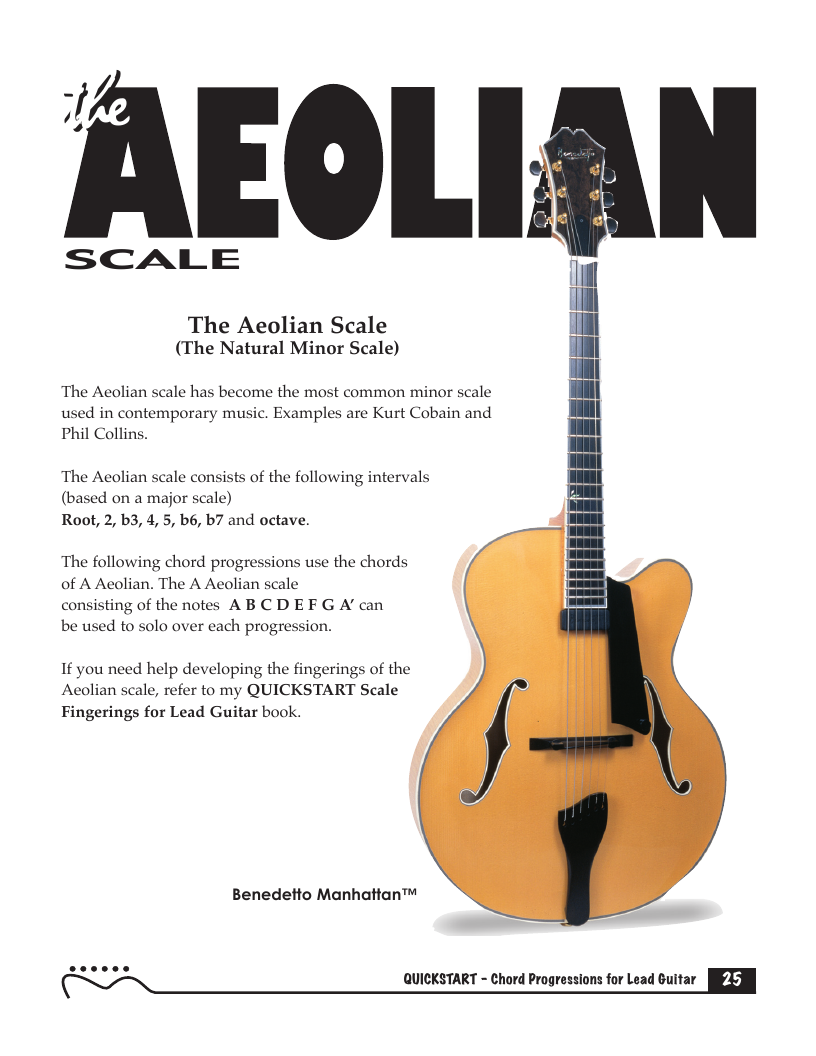
Four Premium practice play-along tracks for mastering and exploring the Aeolian scale. Suitable for any instrument.
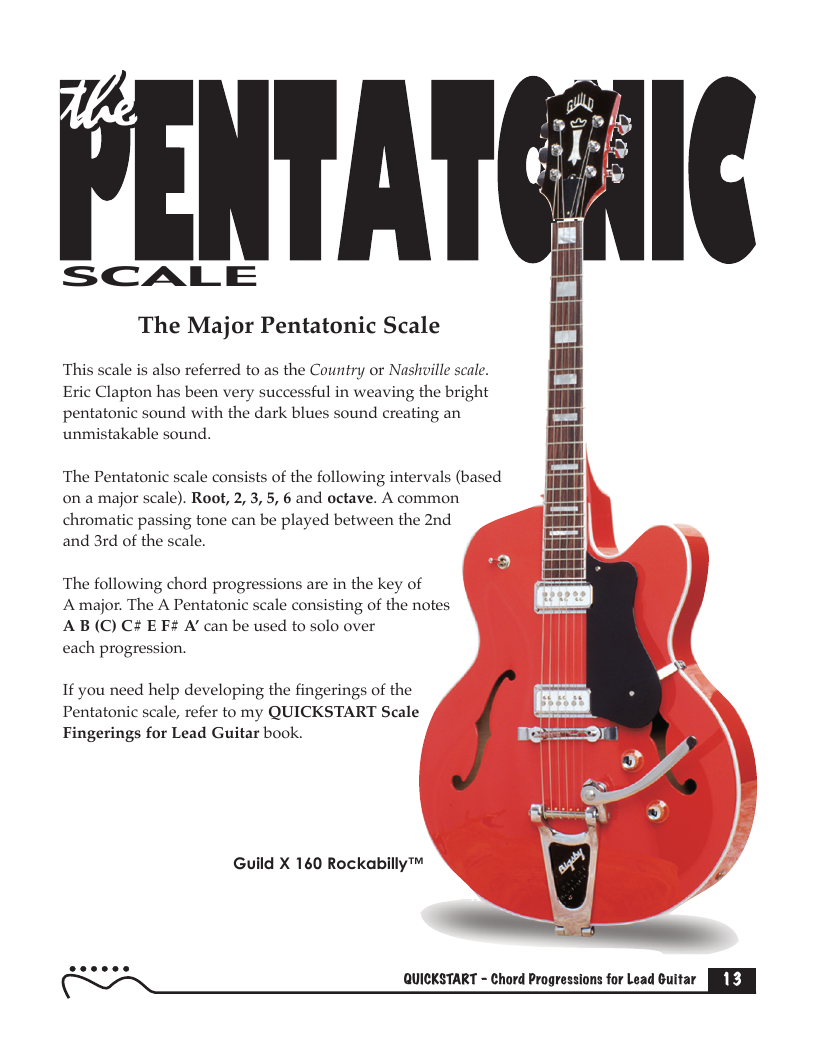
Four Premium practice play-along tracks for mastering and exploring the Pentatonic scale and suitable for any instrument.
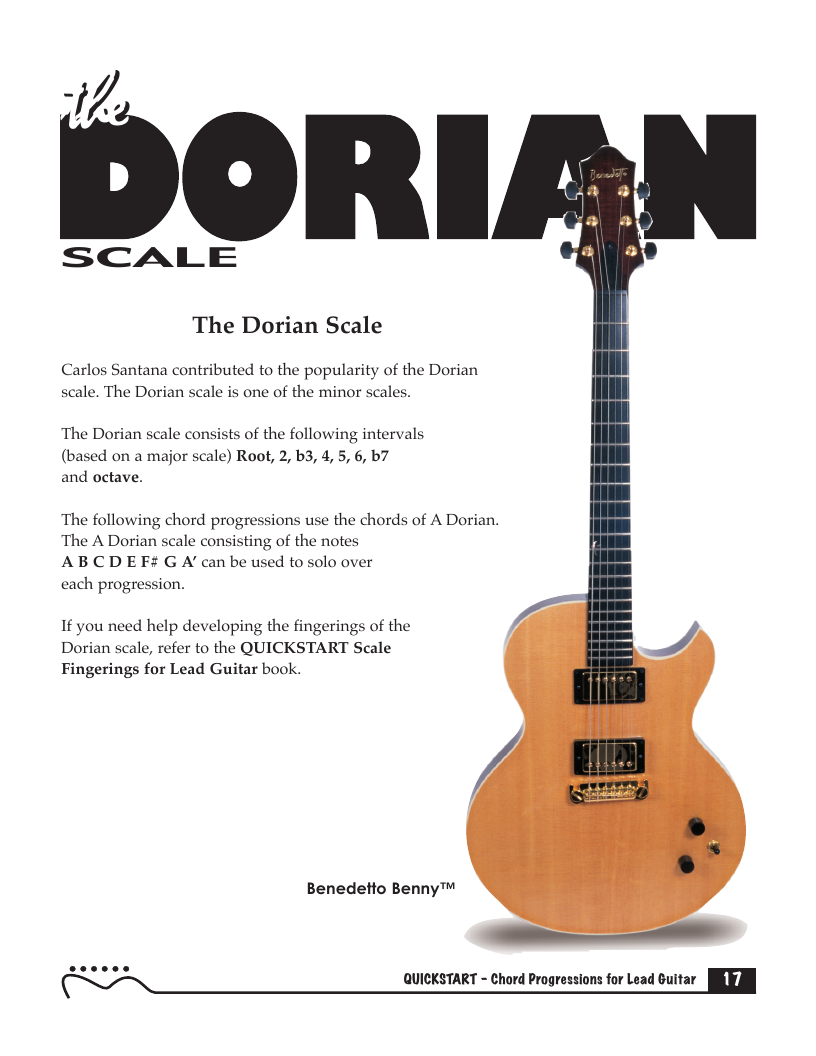
Four Premium practice play-along tracks for mastering and exploring the Dorian scale. Suitable for any instrument.
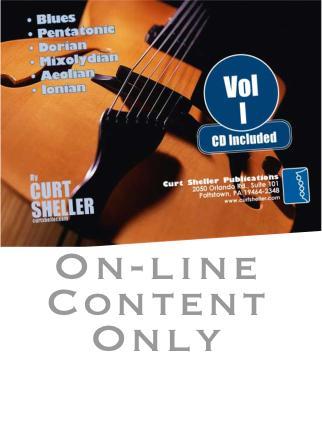
Four Premium practice play-along tracks for mastering and exploring the Blues scale. Suitable for any instrument.
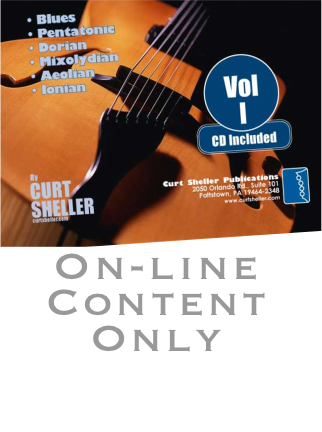
Four Premium practice play-along tracks for mastering and exploring the Mixolydian scale. Suitable for any instrument.
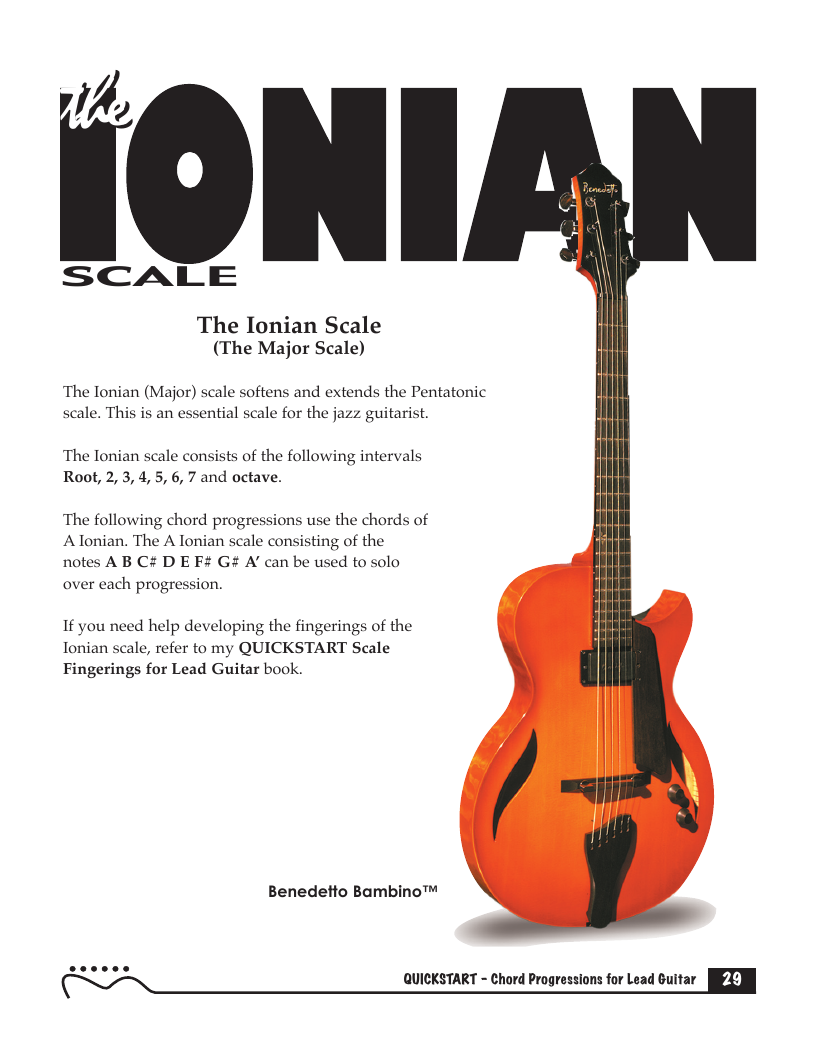
Four premium practice play-along tracks for mastering and exploring the Ionian scale. Suitable for any instrument.
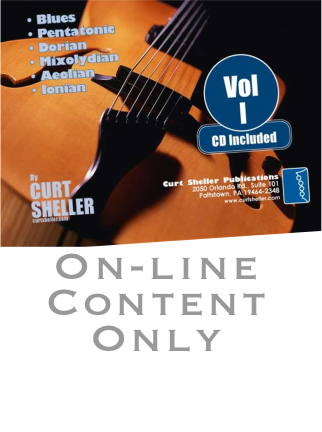
The QUICKSTART Rhythm Section CD contains 24 unique styles designed for contemporary lead guitar. Each track is devoted to a scale covered in the QUICKSTART Scale Fingerings series of books. There are four background tracks for each scale, featuring the chords of the scale. These tracks give you the opportunity to explore the sound of each scale in an improvisational setting.
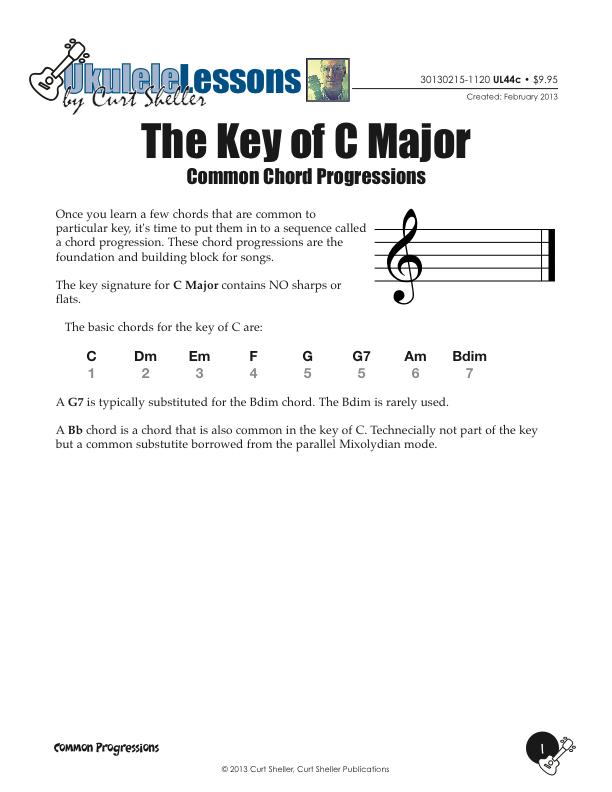
Sometimes called the “learning key”, the key of C Major is one of the easiest keys to memorize and begin using. C major (often just C or key of C) is a musical major scale based on C, with pitches C D E F G A B C. Its key signature has no flats or sharps. Its relative minor is A minor A B C D E F G A B.
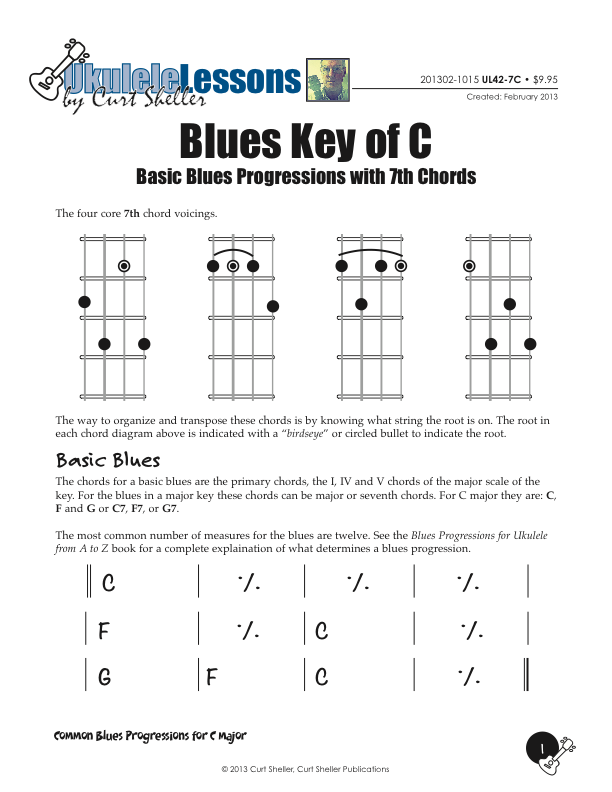
Basic and Quick Change blues chord progressions in the key of C major using the core 7th chords from the Big Six series of lessons. This is a great way to explore this core chord in various keys. These are the two most common blues progressions used in traditional and contemporary music.
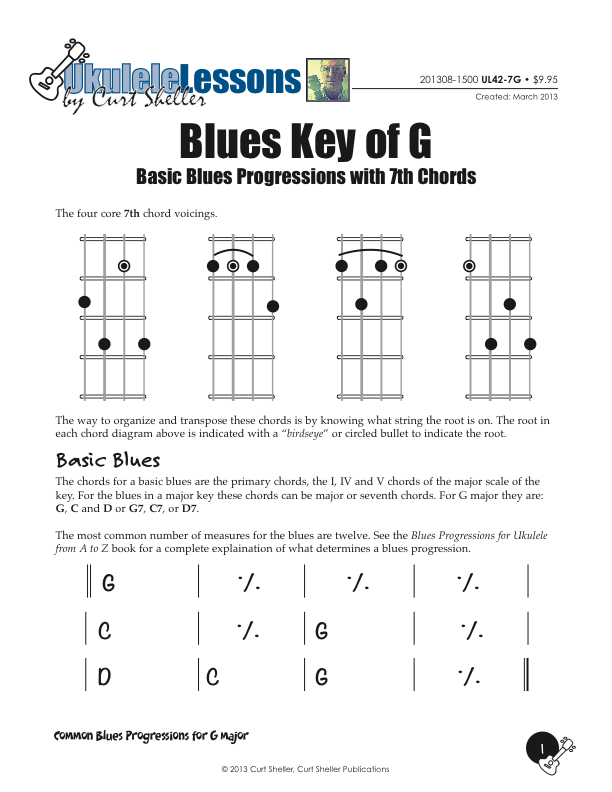
Basic and Quick Change blues chord progressions in the key of G major using the core 7th chords from the Big Six series of lessons. This is great way to explore this core chord in various keys. These are the two most common blues progressions used in traditional and contemporary music.
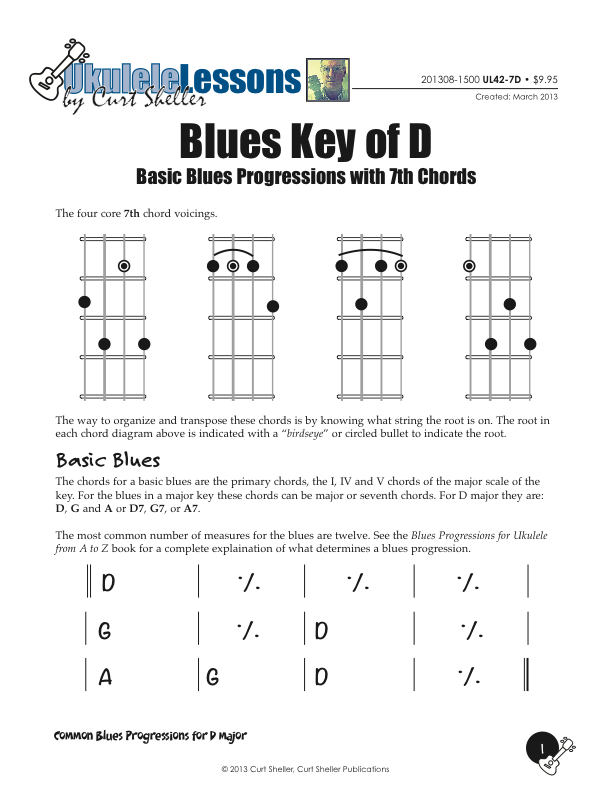
Basic and Quick Change blues chord progressions in the key of D major using the core 7th chords from the Big Six series of lessons. This is great way to explore this core chord in various keys.
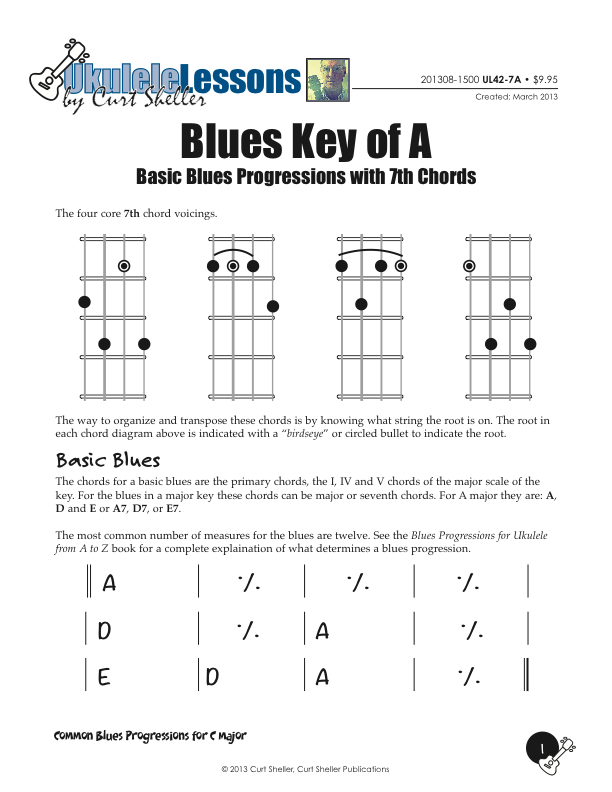
Basic and Quick Change blues chord progressions in the key of A major using the core 7th chords from the Big Six series of lessons. This is great way to explore this core chord in various keys.
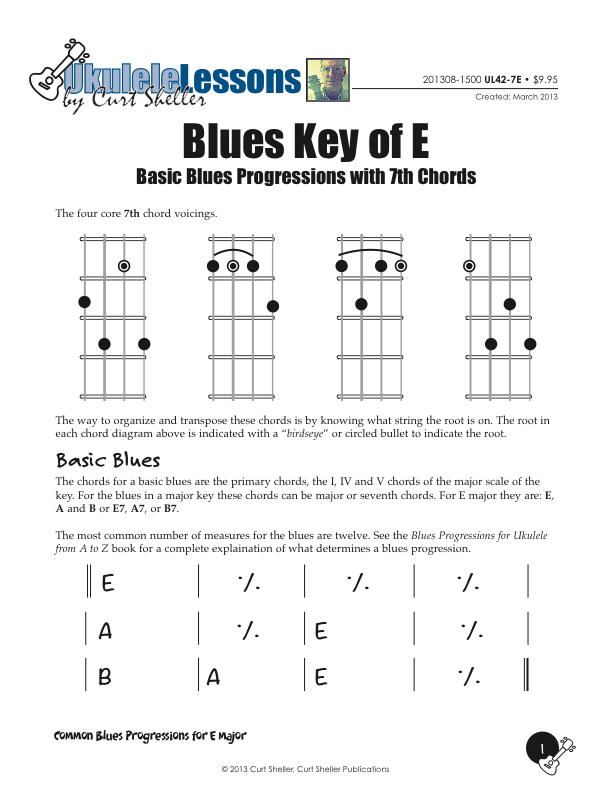
Basic and Quick Change blues chord progressions in the key of E major using the core 7th chords from the Big Six series of lessons. This is great way to explore this core chord in various keys.
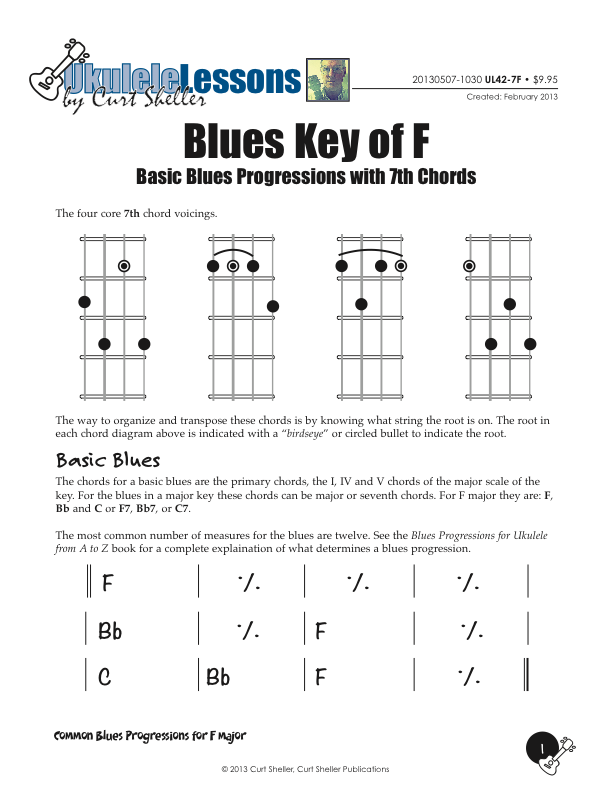
Basic and Quick Change blues chord progressions in the key of F major using the core 7th chords from the Big Six series of lessons. This is great way to explore this core chord in various keys.
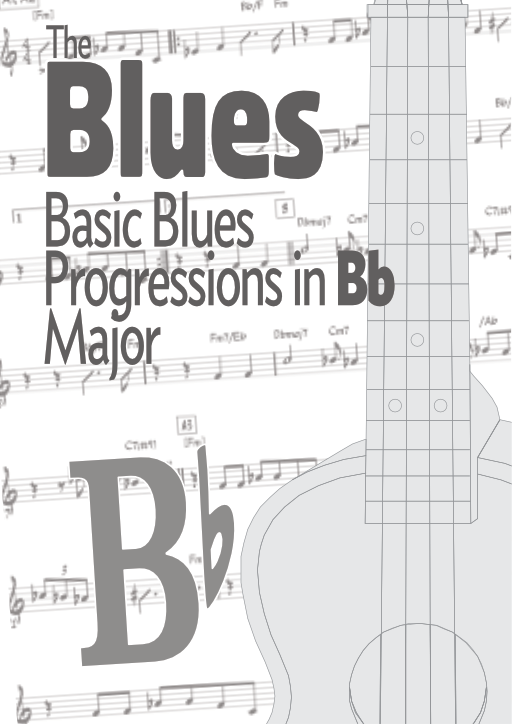
Basic and Quick Change blues chord progressions in the key of Bb major using the core 7th chords from the Big Six series of lessons. This is great way to explore this core chord in various keys.
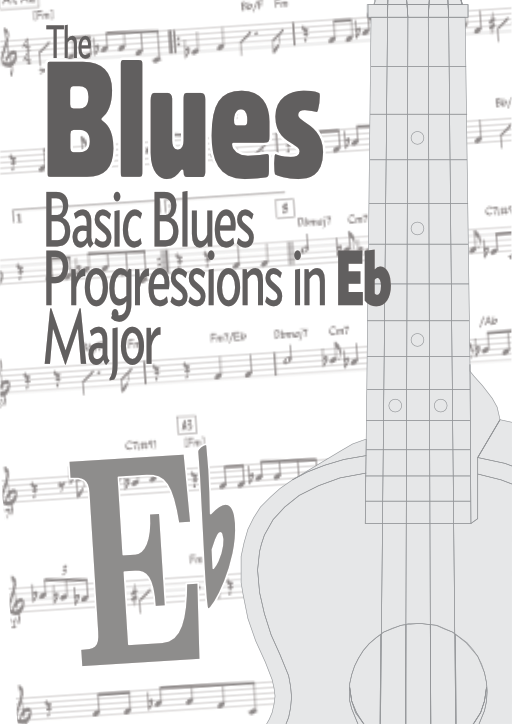
Basic and Quick Change blues chord progressions in the key of Eb major using the core 7th chords from the Big Six series of lessons. This is great way to explore this core chord in various keys.
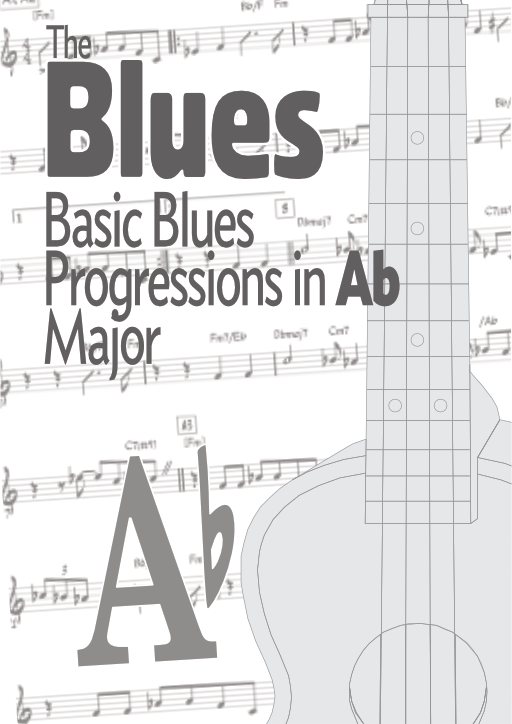
Basic and Quick Change blues chord progressions in the key of Ab major using the core 7th chords from the Big Six series of lessons. This is great way to explore this core chord in various keys.
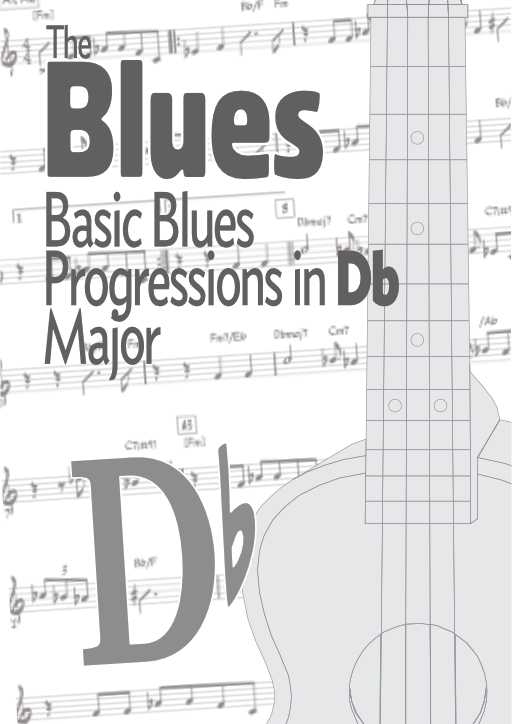
Basic and Quick Change blues chord progressions in the key of Db major using the core 7th chords from the Big Six series of lessons. This is great way to explore this core chord in various keys
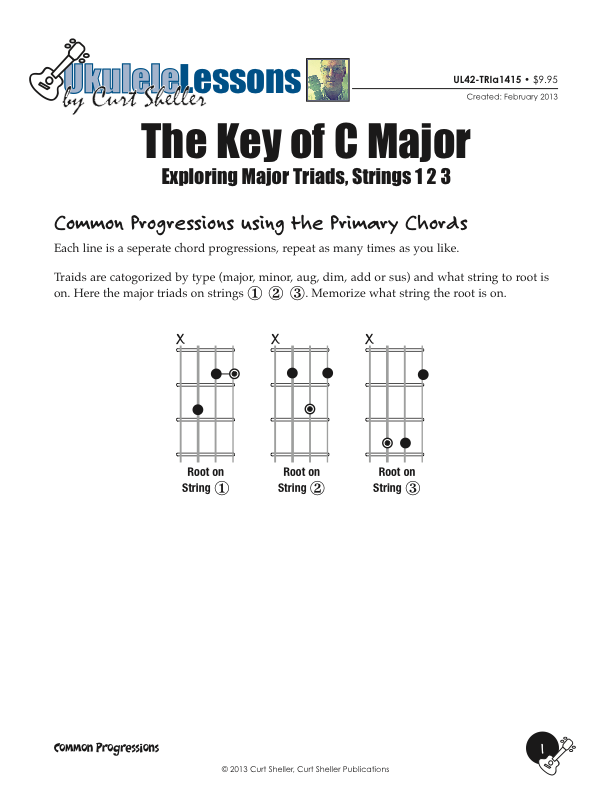
Building major triads using the primary chords of C major. Triads are one of the first chords that really bring to light the need to know the notes of the neck. This lesson shows the three voicings and the solutions for playing a common "1 4 1 5" progression using C, F and G triads on the string 1 2 3 set.
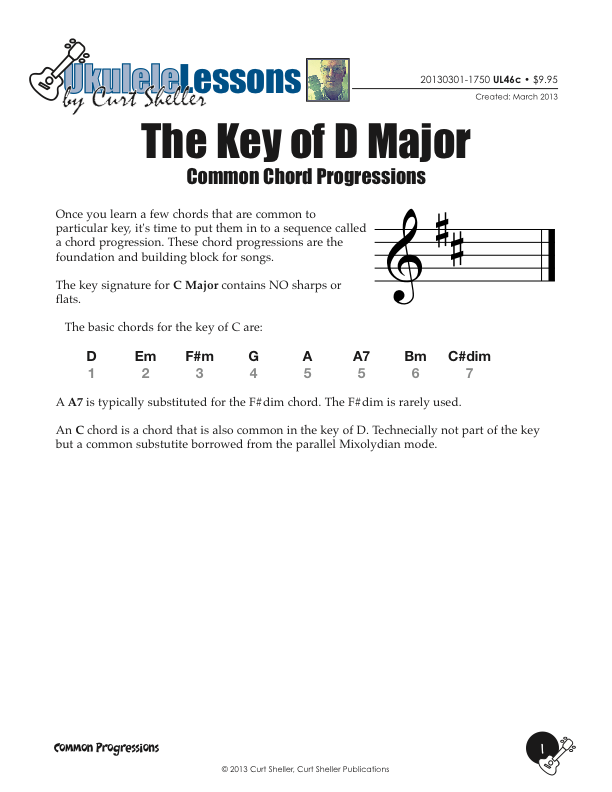
Common chord progressions for the key of D. Using the primary and secondary chords for the key explore these common chord progressions for the key of D. D is one of the common keys that include C, G, *D, A, and E.
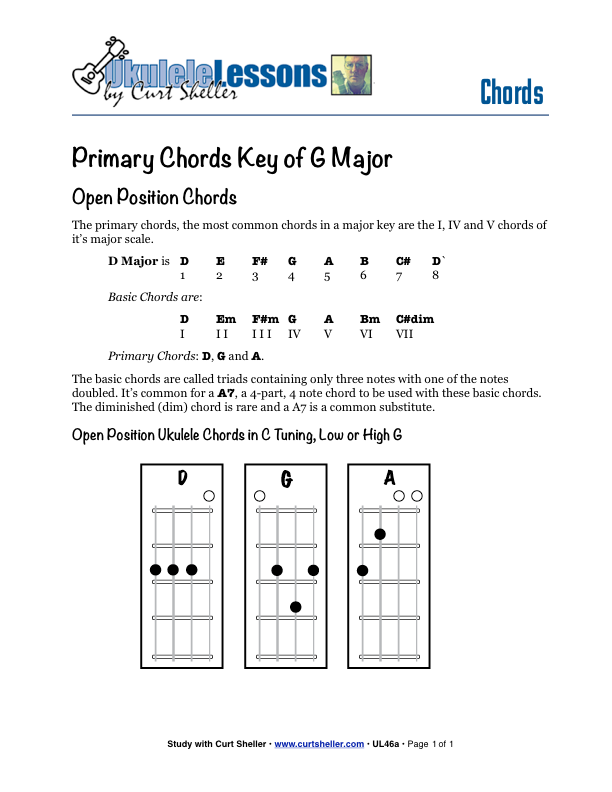
The primary chords for any major key are the I, IV, and V chords of its corresponding major scale. For D Major, the primary chords are: D, G, A, and A7. From the primary and secondary chords of a major key, countless songs and chords progressions can be played.
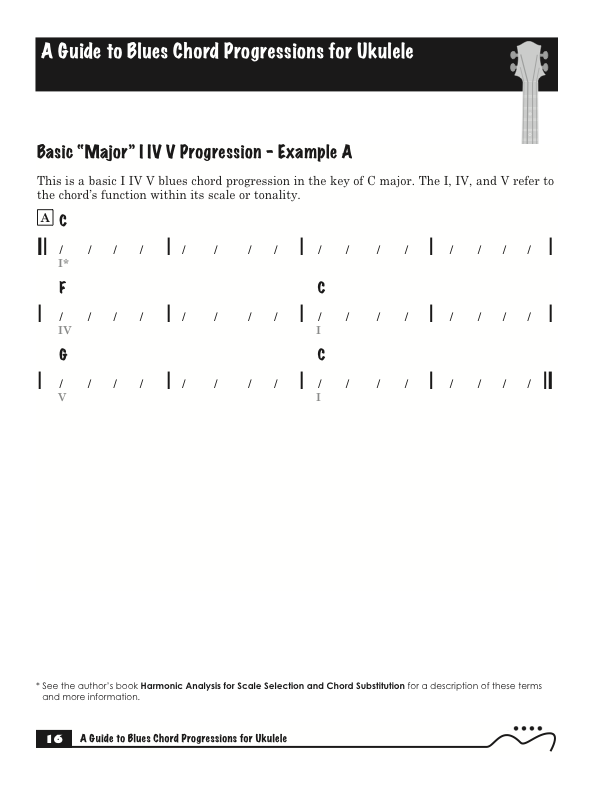
Example A blues progression from my book "A Guide To Blues Chord Progressions For Ukulele A To Z".
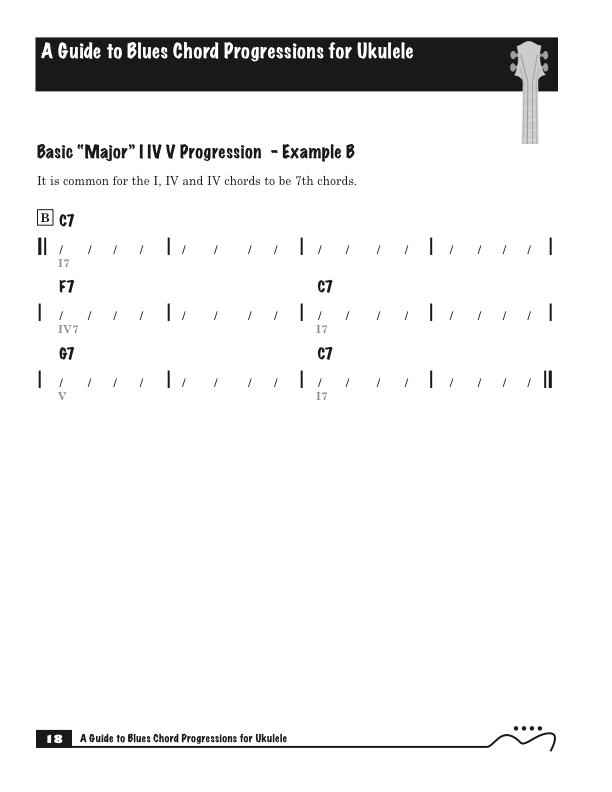
Example B blues progression from my book "A Guide To Blues Chord Progressions For Ukulele A To Z".
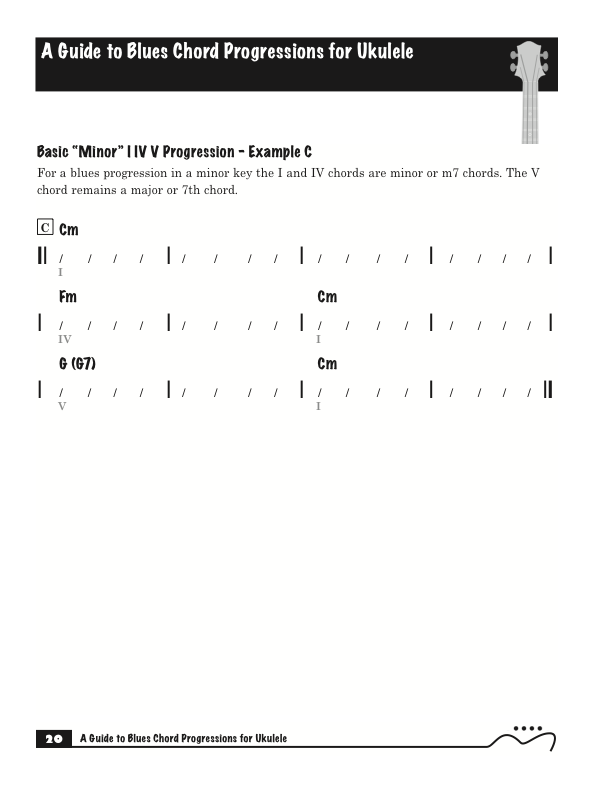
Example C blues progression from my book "A Guide To Blues Chord Progressions For Ukulele A To Z".
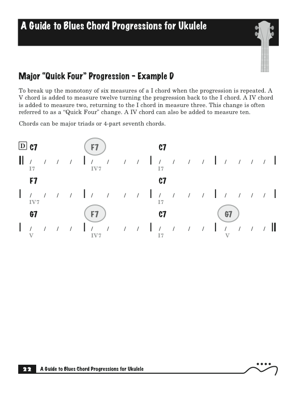
Example D blues progression from my book "A Guide To Blues Chord Progressions For Ukulele A To Z".

Example E blues progression from my book "A Guide To Blues Chord Progressions For Ukulele A To Z".
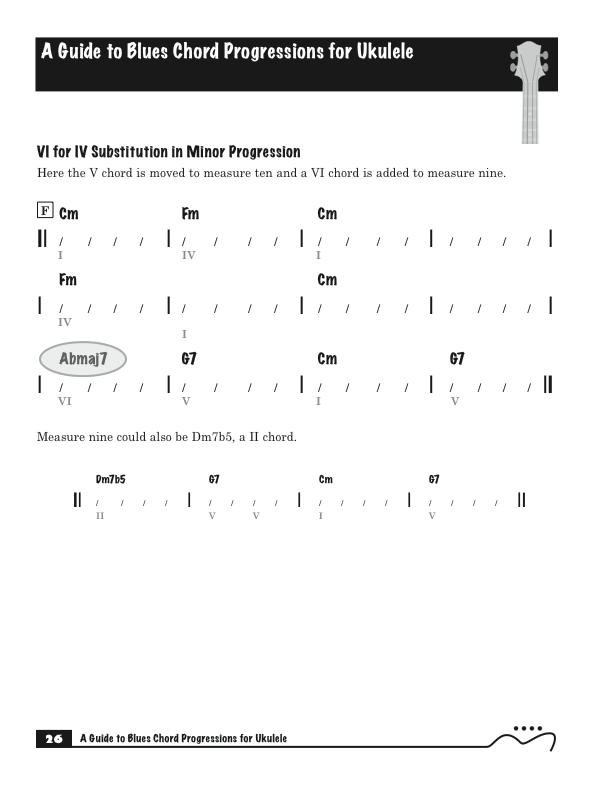
Example F blues progression from my book "A Guide To Blues Chord Progressions For Ukulele A To Z".
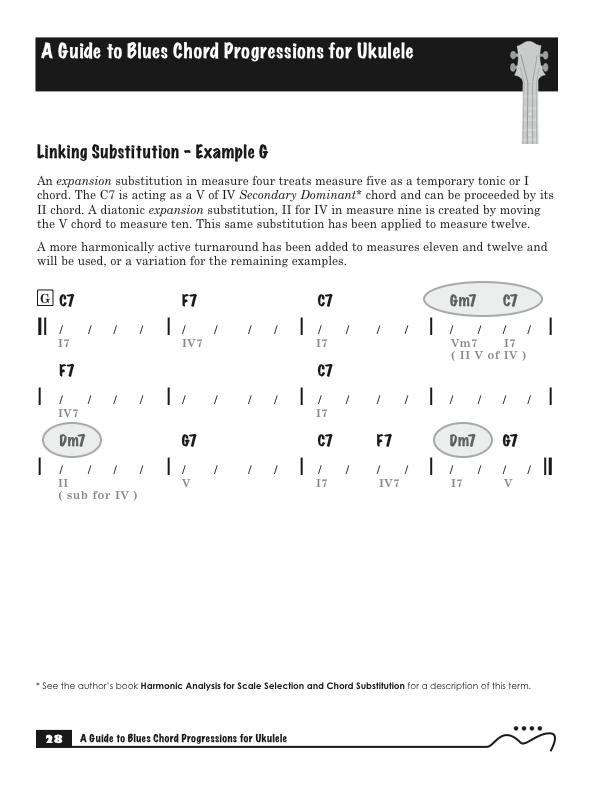
Example G blues progression from my book "A Guide To Blues Chord Progressions For Ukulele A To Z".
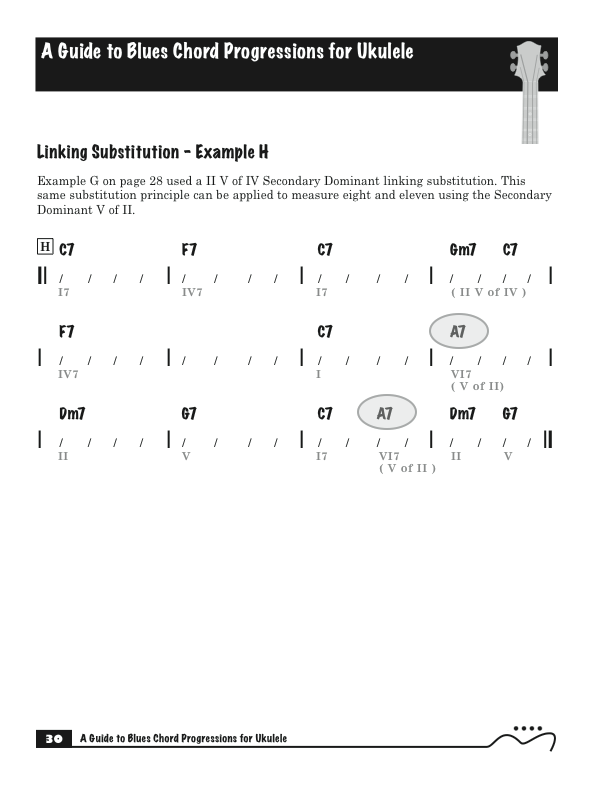
Example H blues progression from my book "A Guide To Blues Chord Progressions For Ukulele A To Z".
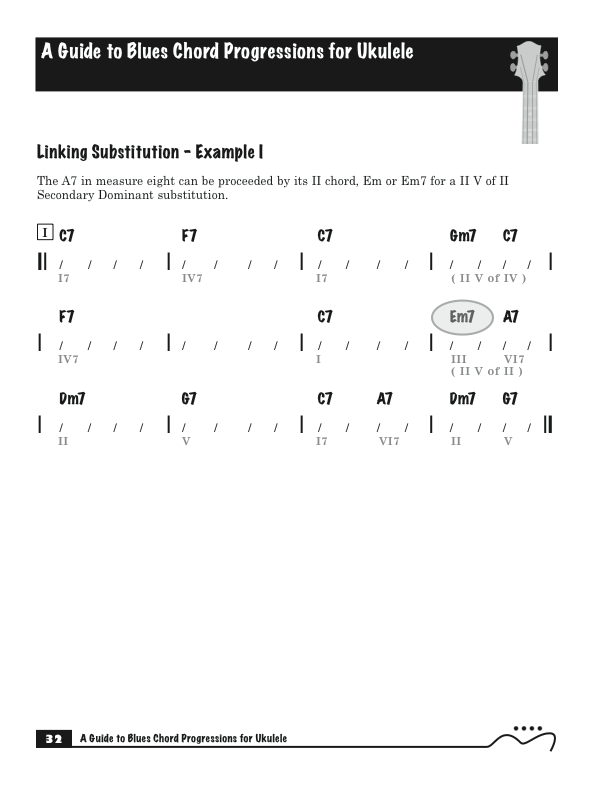
Example I blues progression from my book "A Guide To Blues Chord Progressions For Ukulele A To Z".
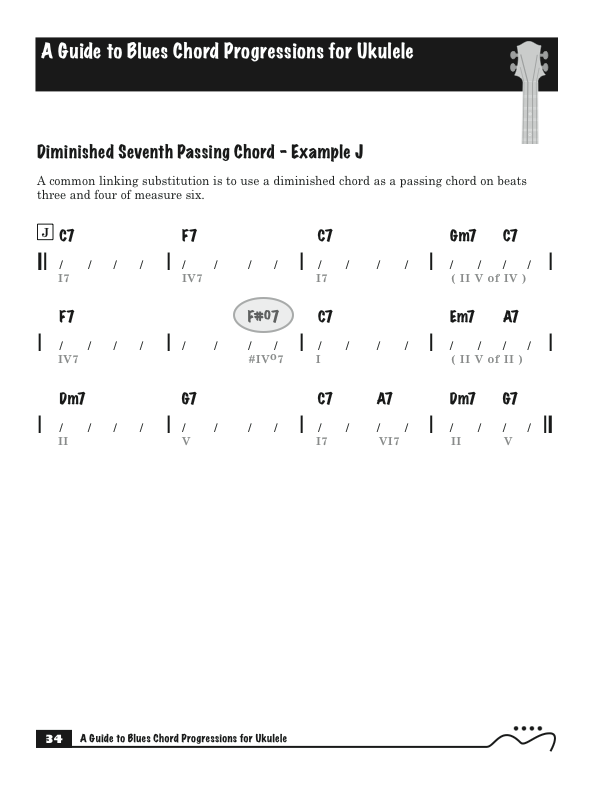
Example J blues progression from my book "A Guide To Blues Chord Progressions For Ukulele A To Z".
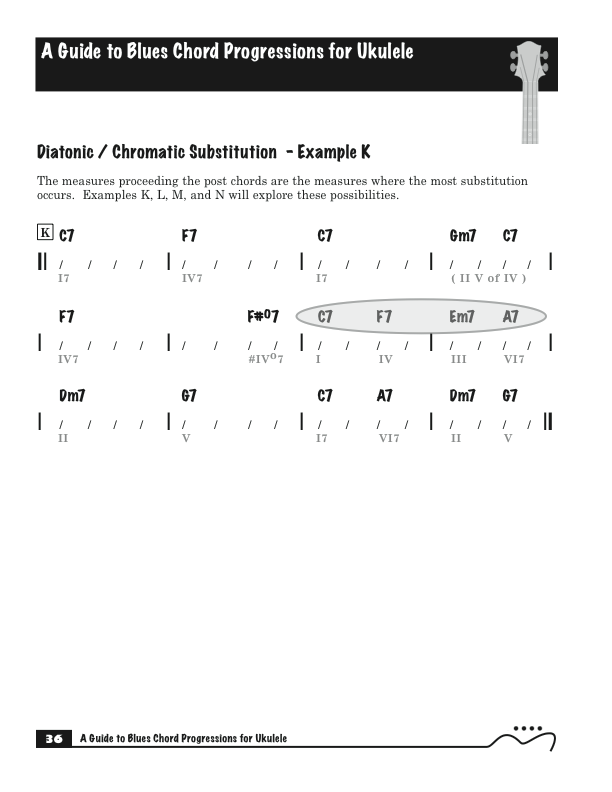
Example L blues progression from my book "A Guide To Blues Chord Progressions For Ukulele A To Z".
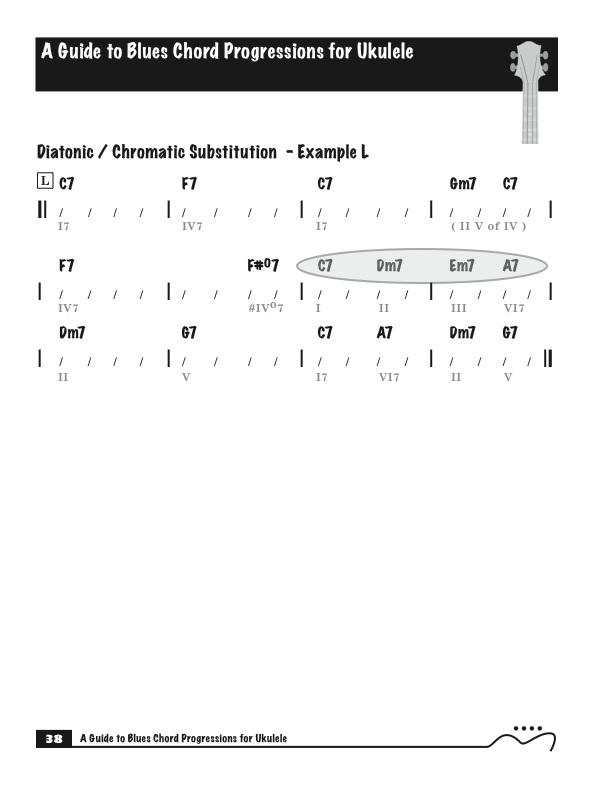
Example L blues progression from my book "A Guide To Blues Chord Progressions For Ukulele A To Z".
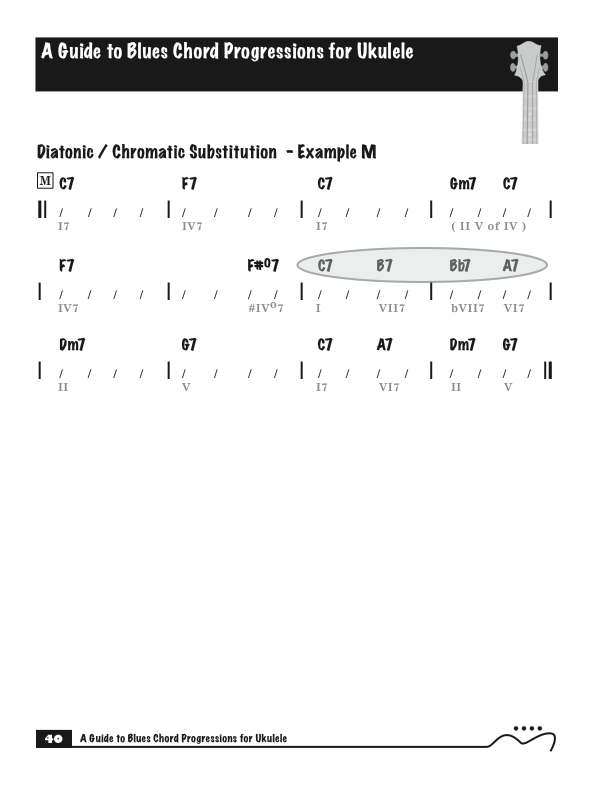
Example M blues progression from my book "A Guide To Blues Chord Progressions For Ukulele A To Z".
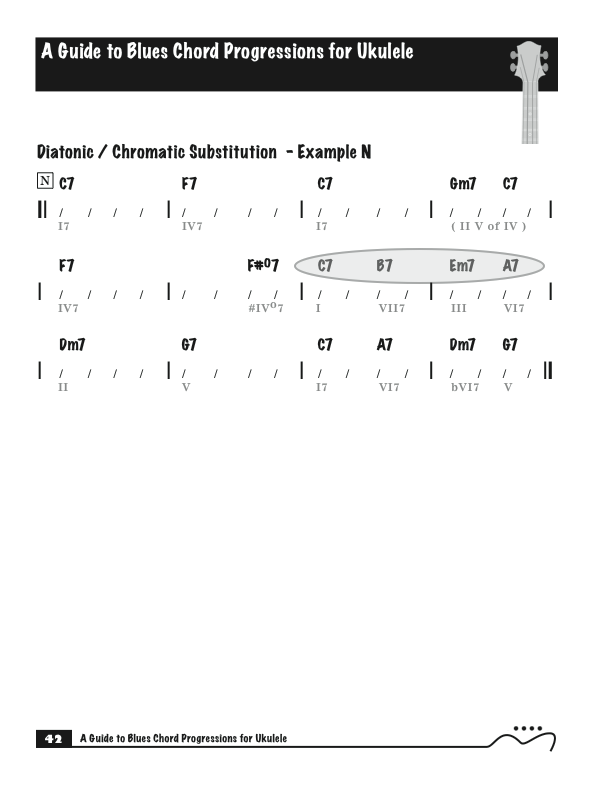
Example N blues progression from my book "A Guide To Blues Chord Progressions For Ukulele A To Z".
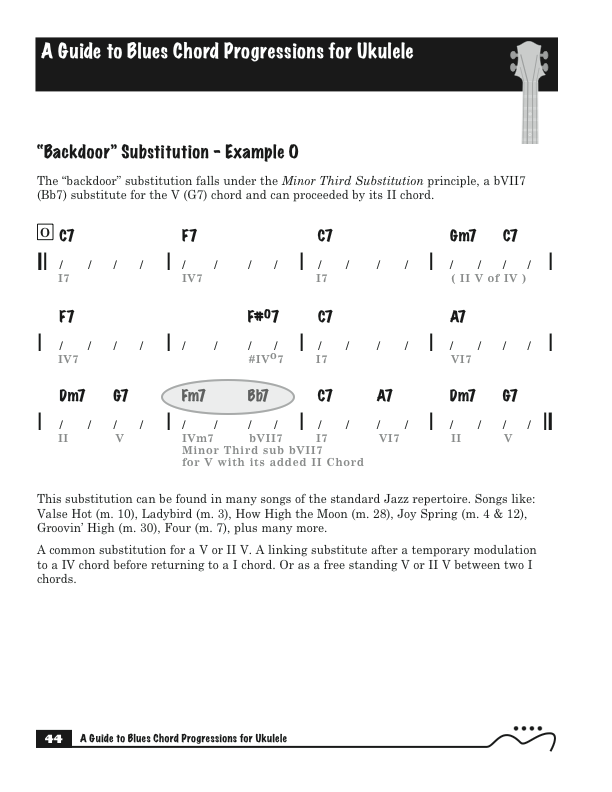
Example O blues progression from my book "A Guide To Blues Chord Progressions For Ukulele A To Z".
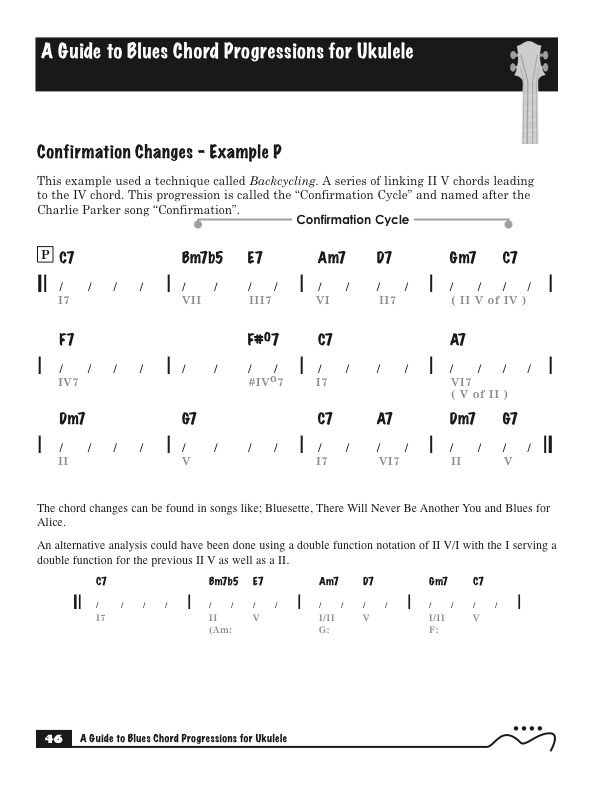
Example P blues progression from my book "A Guide To Blues Chord Progressions For Ukulele A To Z".
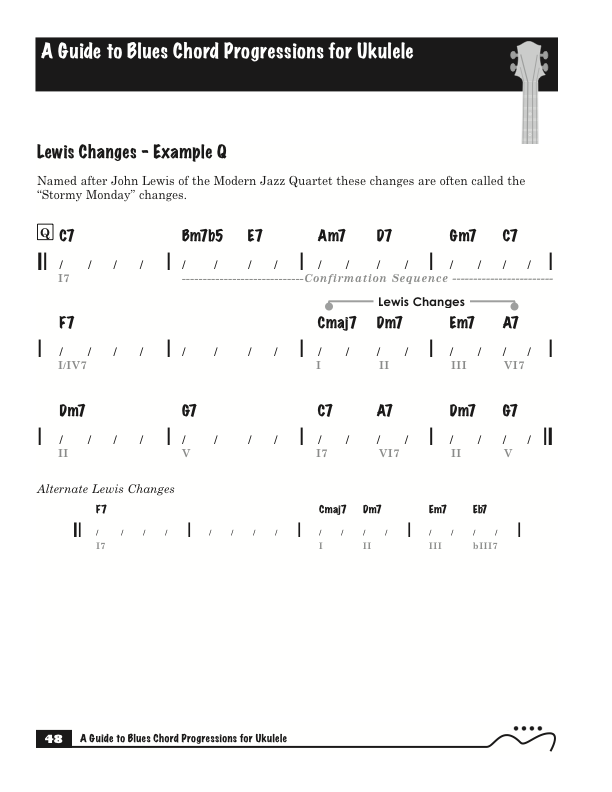
Example Q blues progression from my book "A Guide To Blues Chord Progressions For Ukulele A To Z".
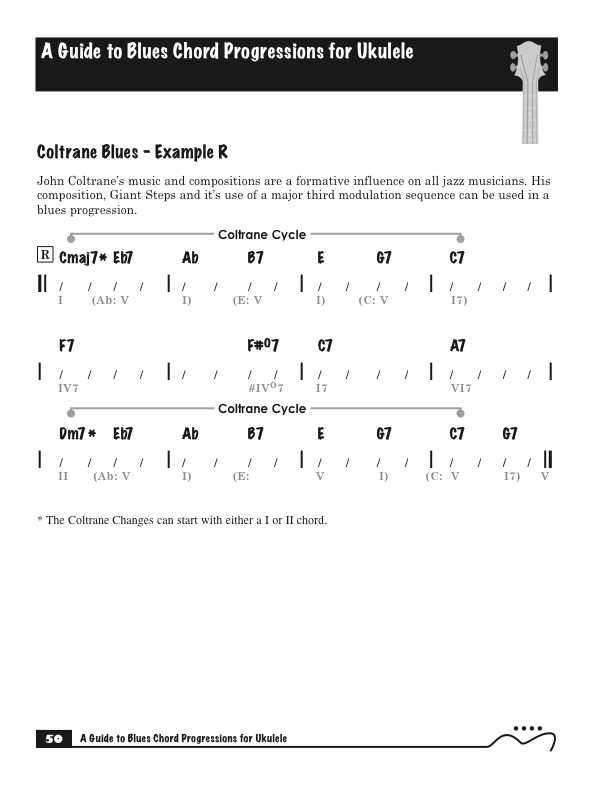
Example R blues progression from my book "A Guide To Blues Chord Progressions For Ukulele A To Z".
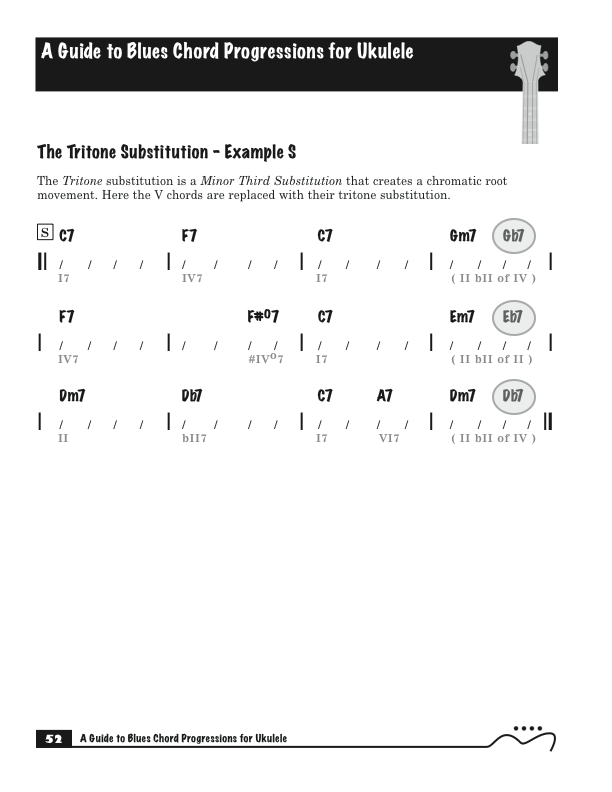
Example S blues progression from my book "A Guide To Blues Chord Progressions For Ukulele A To Z".
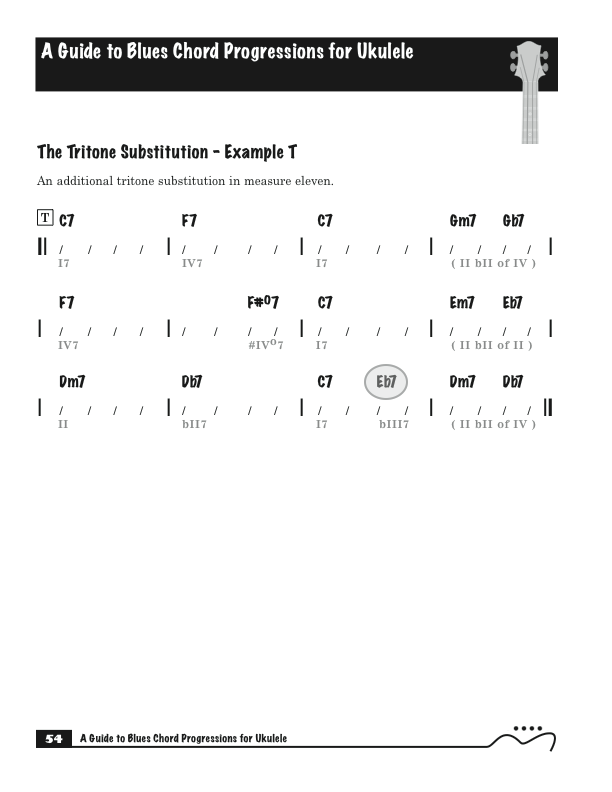
Example T blues progression from my book "A Guide To Blues Chord Progressions For Ukulele A To Z".
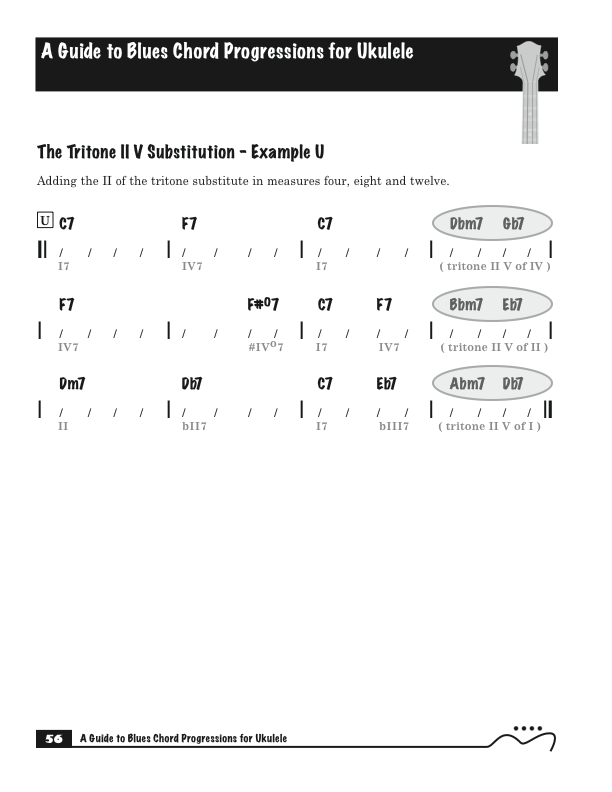
Example U blues progression from my book "A Guide To Blues Chord Progressions For Ukulele A To Z".
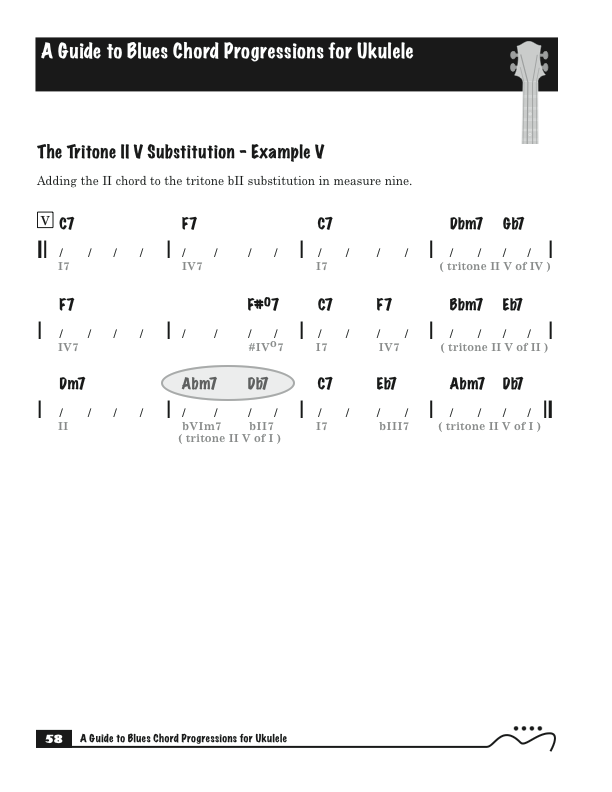
Example V blues progression from my book "A Guide To Blues Chord Progressions For Ukulele A To Z".
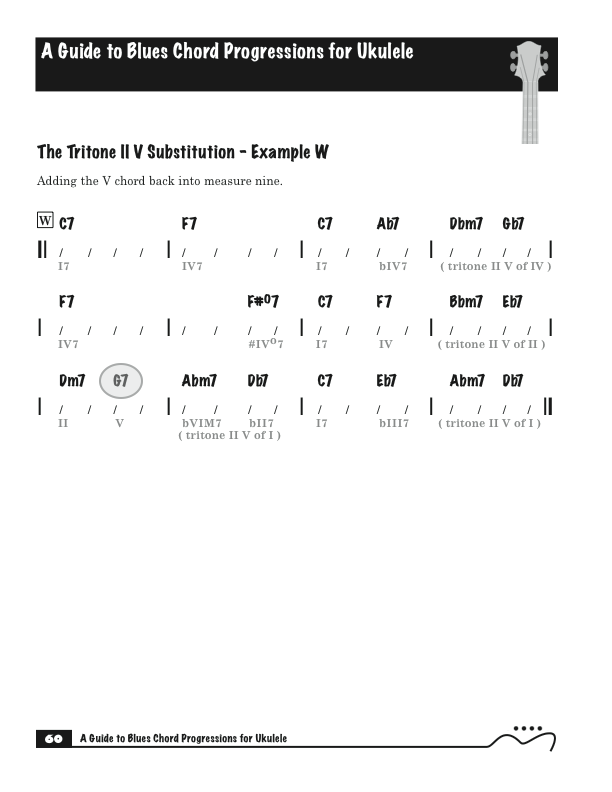
Example W blues progression from my book "A Guide To Blues Chord Progressions For Ukulele A To Z".
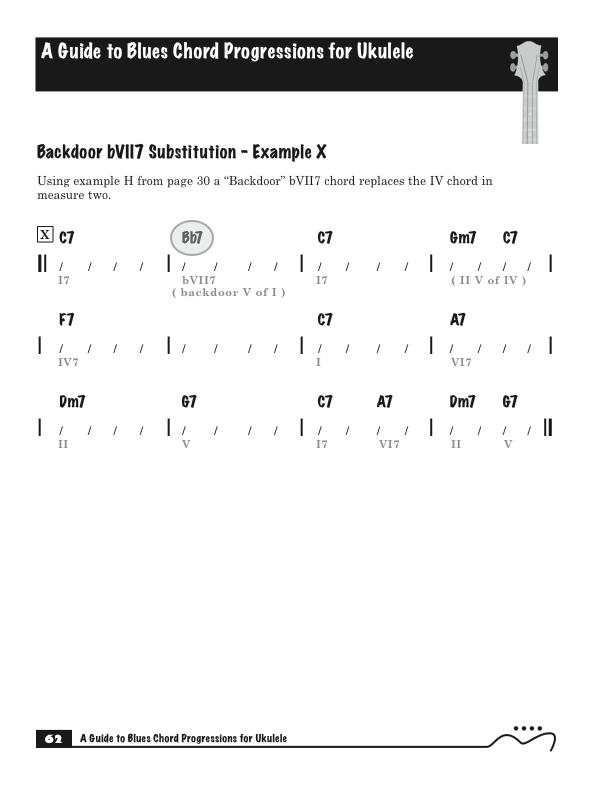
Example X blues progression from my book "A Guide To Blues Chord Progressions For Ukulele A To Z".
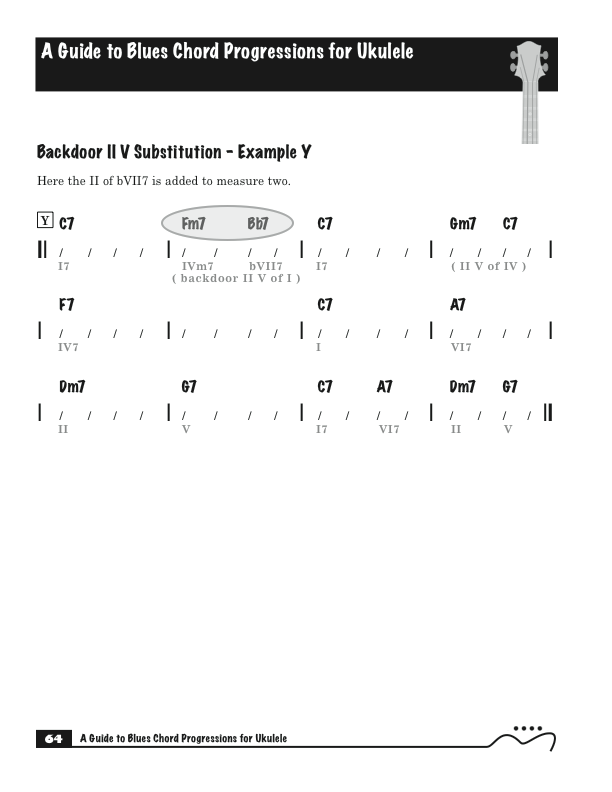
Example Y blues progression from my book "A Guide To Blues Chord Progressions For Ukulele A To Z".

Example Z blues progression from my book "A Guide To Blues Chord Progressions For Ukulele A To Z".
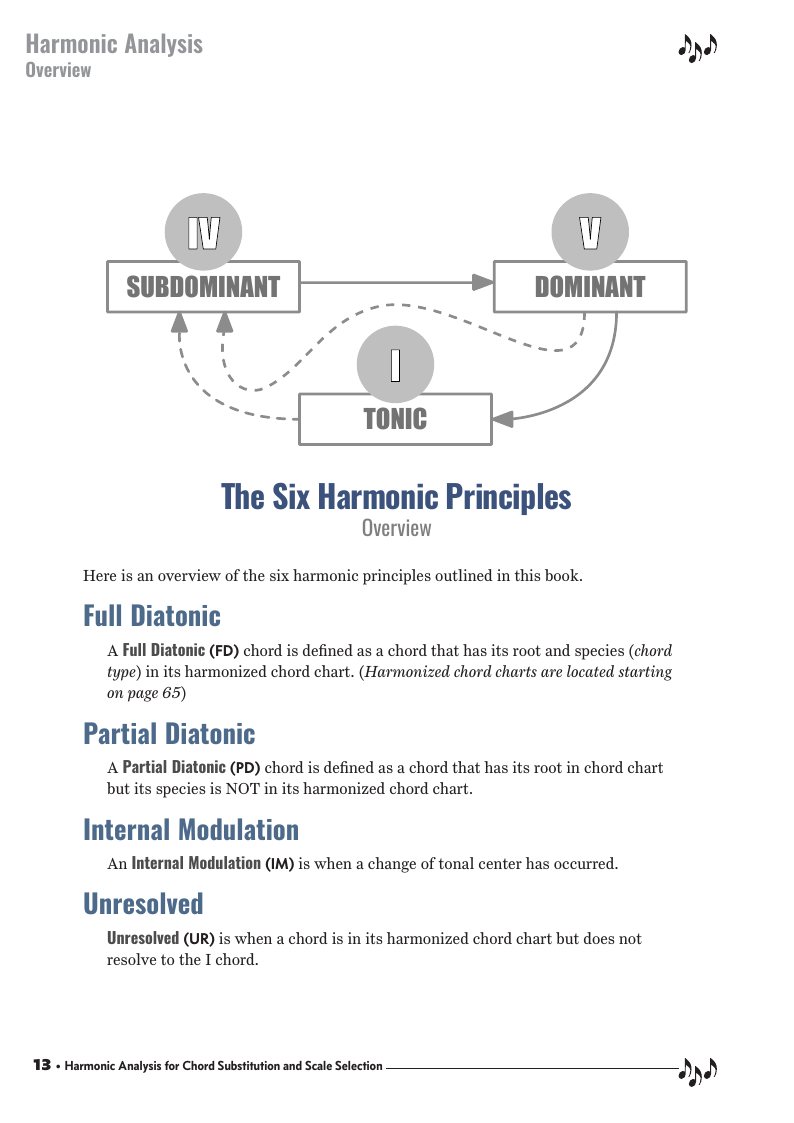
This lessons cover the "Six Harmonic Principles" that are used to do a Harmonic Anlyasis - the understanding of the functional sequence of chords.
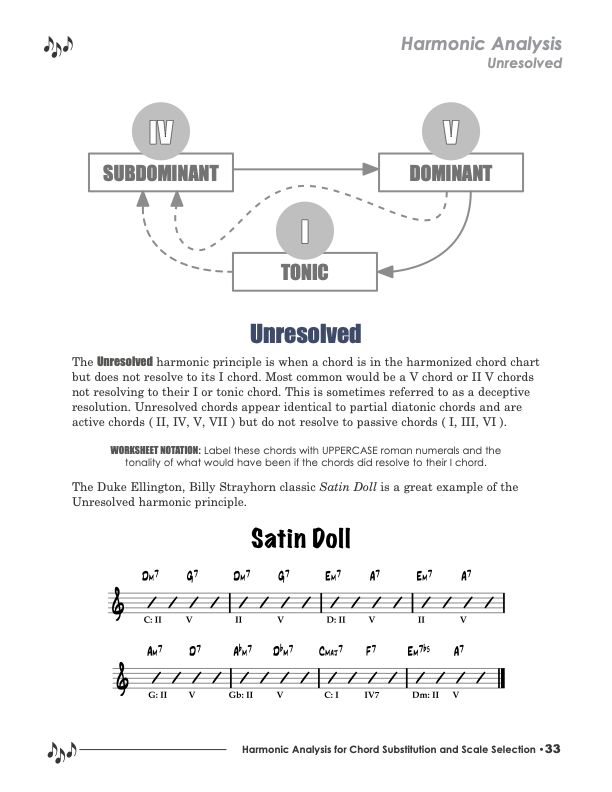
Harmonic Analysis is the understanding of the functional sequence of chords. It is the process used to analyze the harmonic structure of a progression, song, or composition. This analysis is then used to make scale selections for improvisation and chord substitution. This lesson covers the Unresolved harmonic principle.
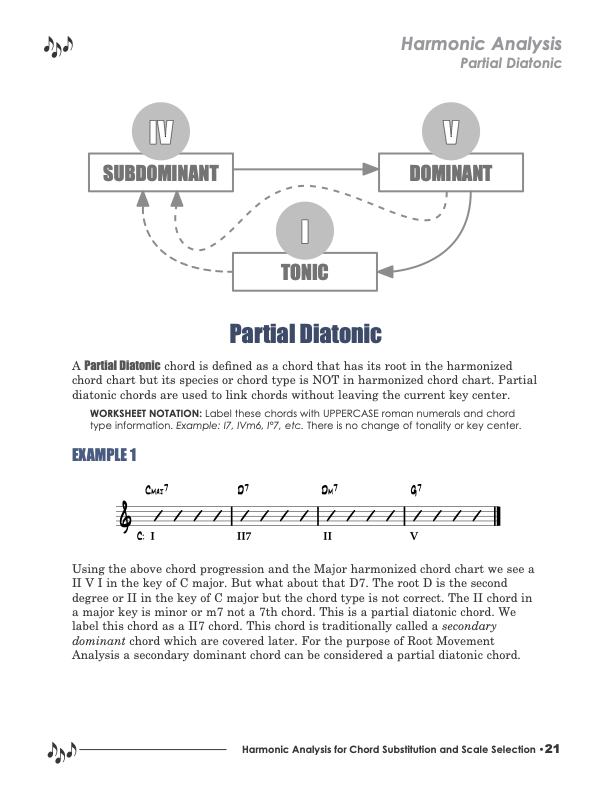
"Partial Diatonic" is defined as a chord that HAS its root in the - "Harmonize Chord Chart," but its species or chord type is NOT in the Harmonized Chord Chart. Partial Diatonic chords are used to link chords without leaving the current key center. Secondary Dominant chords are a big part of this harmonic principle.
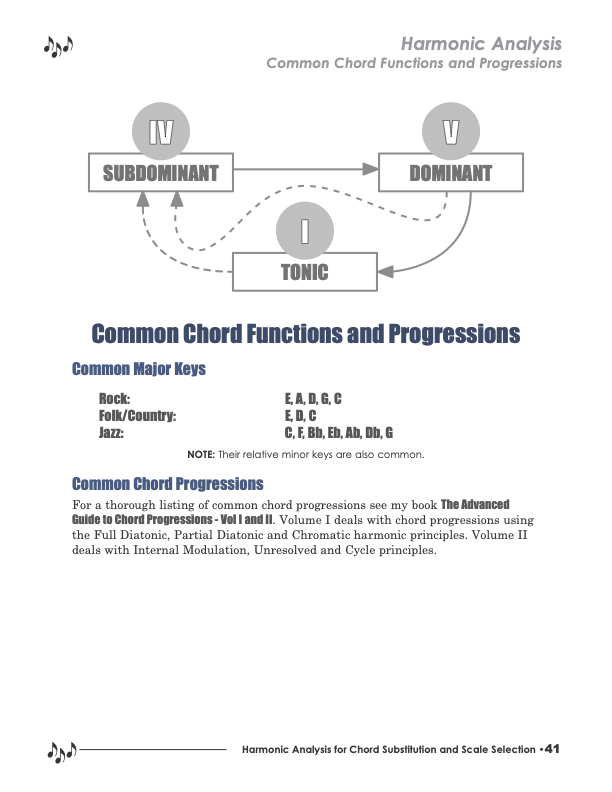
Common chord progression are simply the sequence of chords that contiounly show up in various styles of music and common keys.
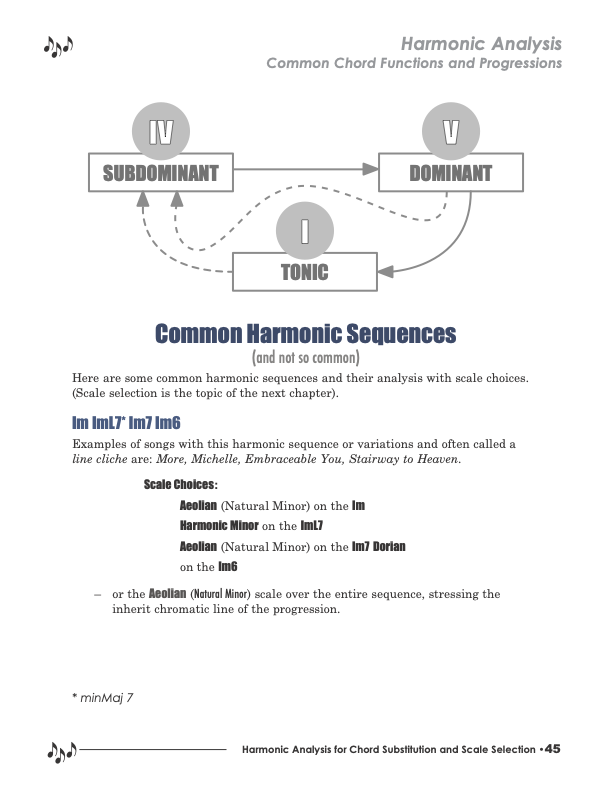
Common harmonic sequences and their analysis with scale choices.
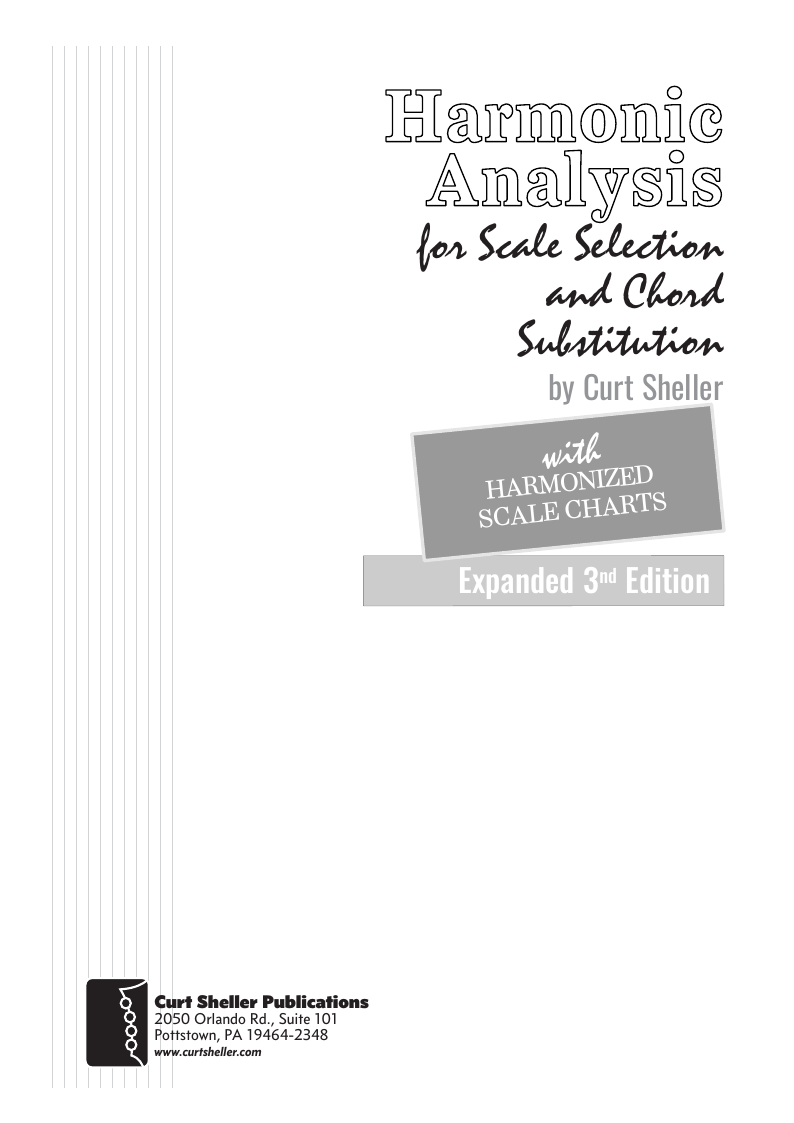
Harmonic Analysis ( HA ) is the process used to determine the harmonic function of chords within a chord progression. A chord progression is defined as a sequence of chords, each chord has a root and has a particular chord type. The relationship of a chord's root to a scale determines its function within that scale's tonality. Once a chord's function is identified, scale selections along with chord and scale substitutions can be made. This process is called Root Movement Analysis ( RMA ). This series of lessons are extracted from my book for use with individual private and on-line students. Each lesson directly corresponds the chapters in my book Harmonic Analysis for Scale Selection and Chord Substitution by Curt Sheller (me).
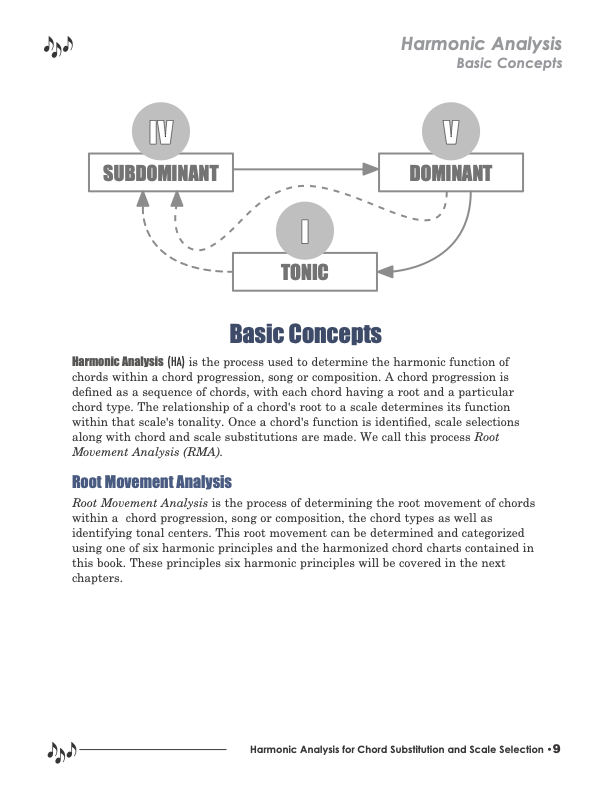
Harmonic Analysis is the process of determining the root movement of chords within a chord progression, the chord types that are used as well as identifying tonal centers. This root movement can be determined and categorized using one of six harmonic principles and the harmonized chord charts referenced in the lessons.
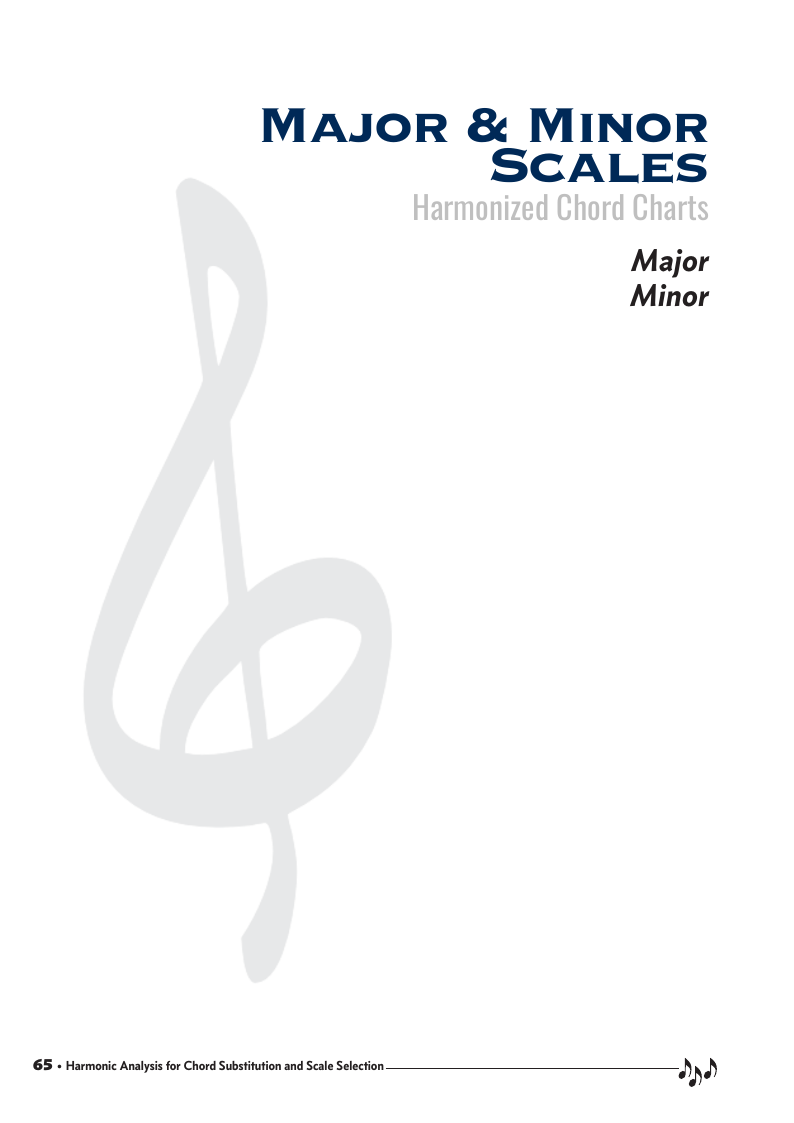
Major and Minor Harmonized Chord Charts are used for while doing a Harmonic Analysis (HA). Shows triads and 4-part chords for ALL 15 major and minor keys. "Yes, Virginia there are 15 keys."
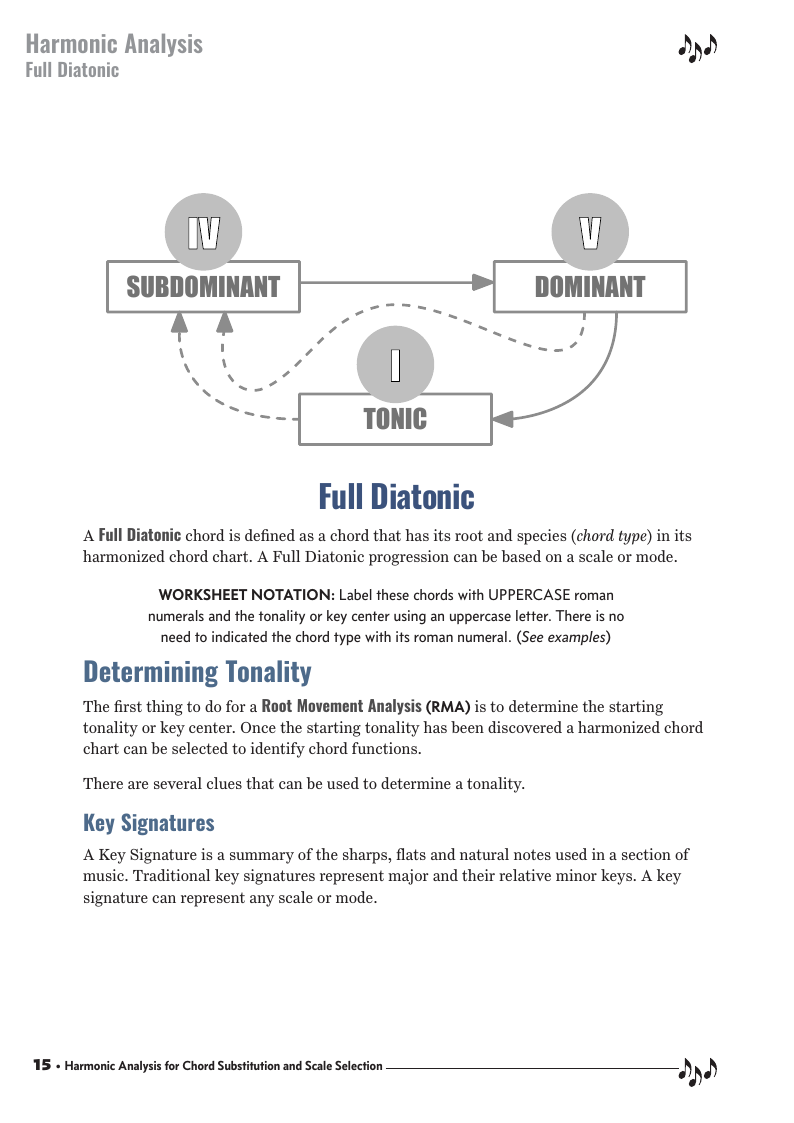
Harmonic Analysis is the understanding of the functional sequence of chords. It is the process used to analyze the harmonic structure of a progression, song, or composition. This analysis is then used to make scale selections for improvisation and chord substitution. This lesson covers the Full Diatonic harmonic principle.
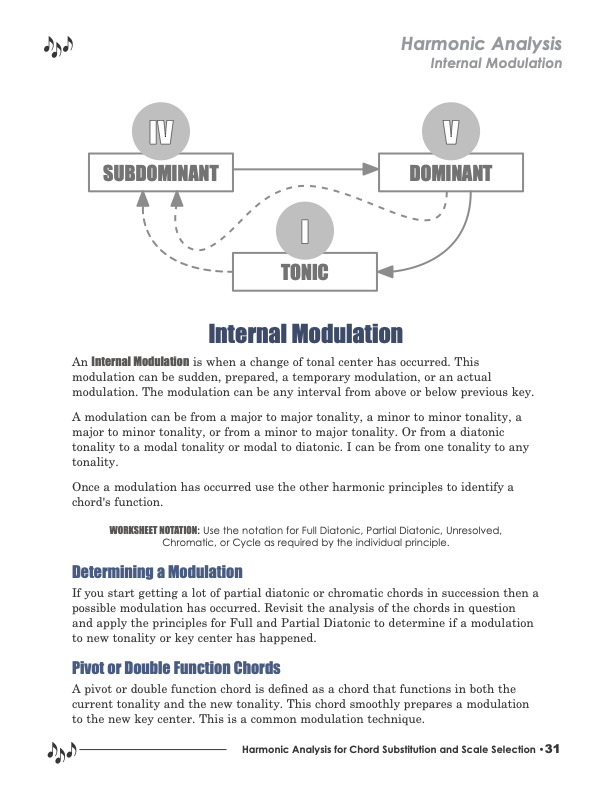
Harmonic Analysis is the understanding of the functional sequence of chords. It is the process used to analyze the harmonic structure of a progression, song, or composition. This analysis is then used to make scale selections for improvisation and chord substitution. This lesson covers the Internal Modulation harmonic principle.
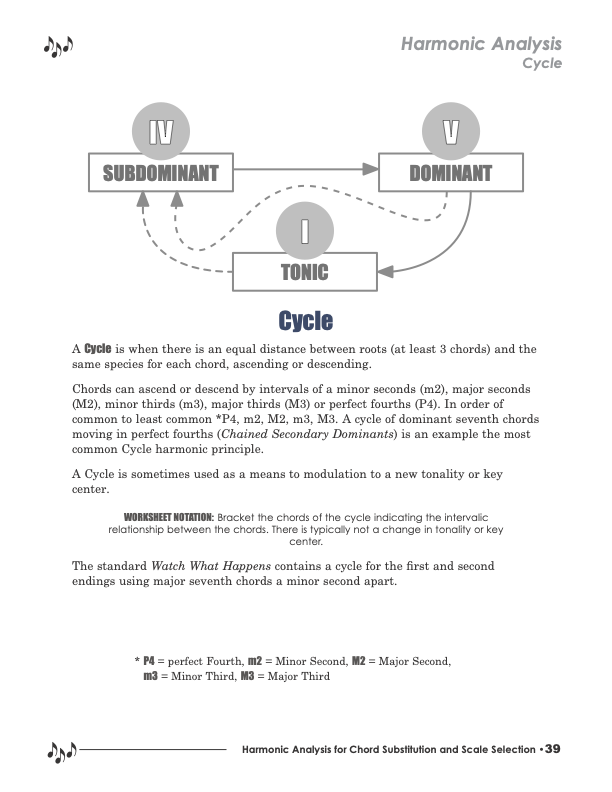
Harmonic Analysis is the understanding of the functional sequence of chords. It is the process used to analyze the harmonic structure of a progression, song, or composition. This analysis is then used to make scale selections for improvisation and chord substitution. This lesson covers the Cycles harmonic principle.
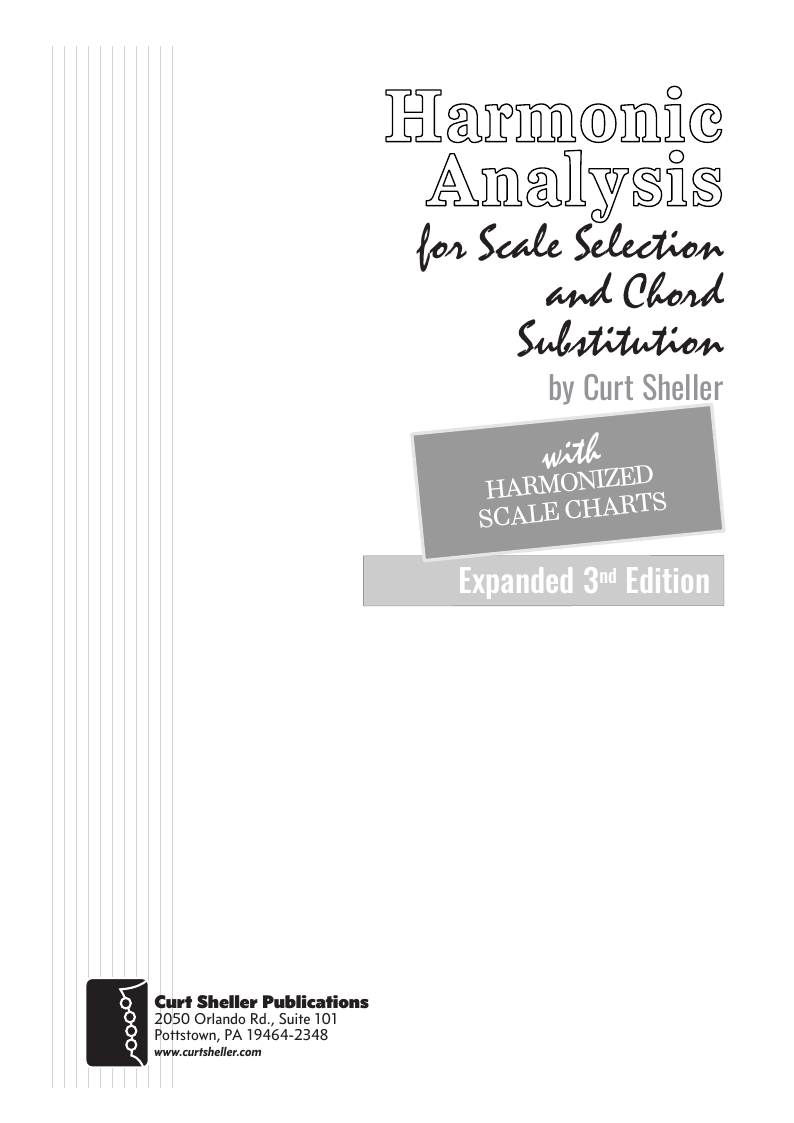
Harmonic Analysis (HA) is the process used to determine the harmonic function of chords within a chord progression, sequence, composition or song. A chord progression is defined as a sequence of chords, each chord has a root and has a particular chord type.

There's actually a lot in common between songs when it comes to chord progressions. Here is an every growing list of songs that use the common 1 5 6 4 chord progression. This is a “Full Diatonic” chord progression, with each chord coming from its corresponding major scale. This common progression is called the “Four Chord, Pop Progression.”
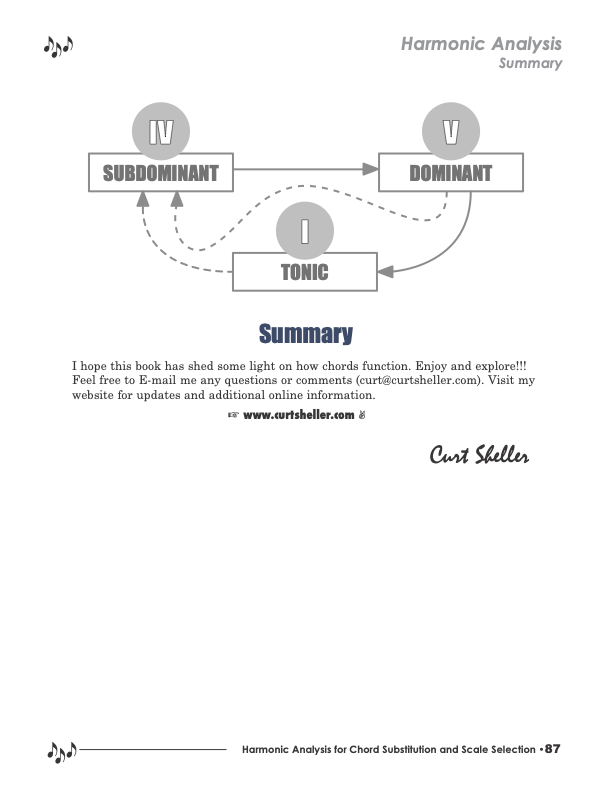
HARMONIC ANALYSIS for Scale Selection and Chord Substitution explored the six harmonic principles for analyzing chord progressions and songs using tradition tonic-dominant harmony and the scale modes.
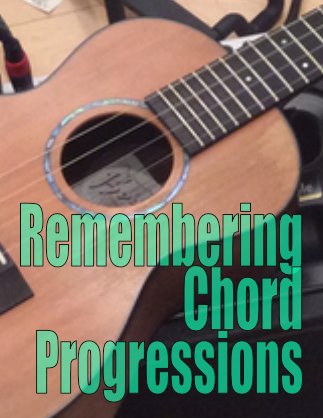
Listening to songs and wanting to play the same songs on ukulele – that's what draws most people to the ukulele. That and it looks like a load of fun and easy to play – which it is. Then you need to actually remember the songs that you're learning, so you can play them again. And, hopefully, not have to read them off a sheet all the time.

Common Jazz Chord Progressions - there is a lot more common between songs than you might think. This lessons show some common progressions and the jazz standards that use them.

The "Andalusian" cadence is a term adopted from flamenco music for a chord progression comprising four chords descending stepwise. It is otherwise known as the minor descending tetrachord. Traceable back to the Renaissance, its effective sonorities made it one of the most popular progressions in classical music.

In jazz and jazz harmony, the chord progression from IV7 to bVII7 to I has been nicknamed the backdoor progression or the backdoor II-V. This name derives from an assumption that the normal progression to the tonic, the II-V-I turnaround (II-V7 to I, see also authentic cadence) is, by inference, the front door. It can be considered a minor plagal cadence in traditional theory.

The twelve bar blues and its many variants use an elongated, three-line form of the I - IV - V chord progression that has also generated countless hit records, including the most significant output of rock and rollers such as Chuck Berry and Little Richard.
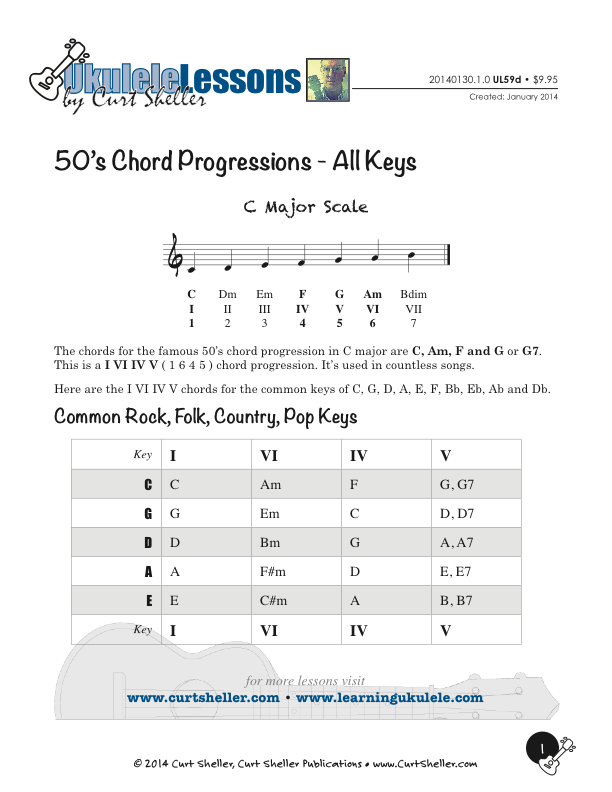
Another common way of extending the I - IV - V sequence is by adding the chord of the sixth scale degree, giving the sequence I - vi - IV - V or I - vi - ii - V, sometimes called the 50s progression.

Diatonic scales such as the major and minor scales lend themselves particularly well to the construction of common chords because they contain a large number of perfect fifths. Such scales predominate in those regions where harmony is an essential part of music, as, for example, in the common practice period of western classical music.
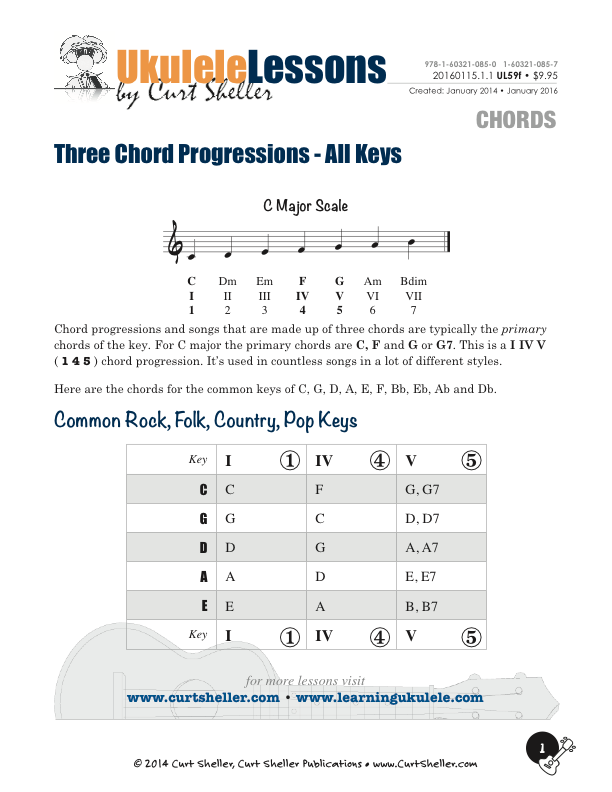
Three-chord tunes, though, are more common, since a melody may then dwell on any note of the scale. Often the chords may be selected to fit a pre-conceived melody, but just as often it is the progression itself that gives rise to the melody.
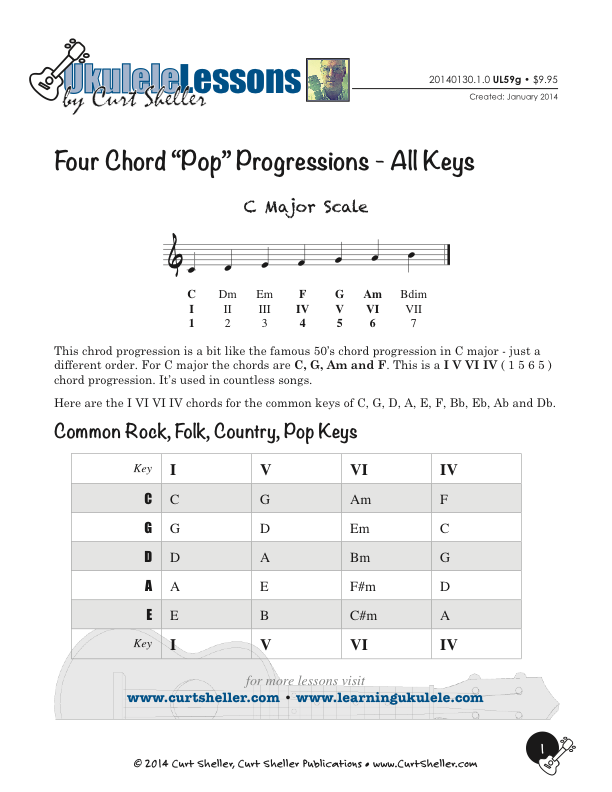
This is the most popular chord progression in use today. It has replaced the most common chord progression that was used in the 50s, the 1 6 2 5 chord progression.

In the key of C major Pachelbel's Canon is: C G Am Em F C F G. This is a I V VI III IV I IV V in harmonic analysis notation. In Nashville Numbering it's 1 5 6 3 4 1 4 5. It is a full diatonic progression with all the chords coming from it's parent major scale. A bit of a varaition of the Four Chord Pop progression.

An overview of the Ukulele Chords and Chord Progression lessons available.

Exploring major triads using the primary chords of D major. Triads are one of the first chords that really bring to light the need to know the notes of the neck. This lessons shows the three voicings and the solutions for playing a common 1 4 1 5 progression using D, G and A triads on the string 1 2 3 set.

Learning the similarities between chord progressions and songs helps you remember a lot of songs. There's a lot more in common between songs than one might think. This series of lessons explores common chord progressions.
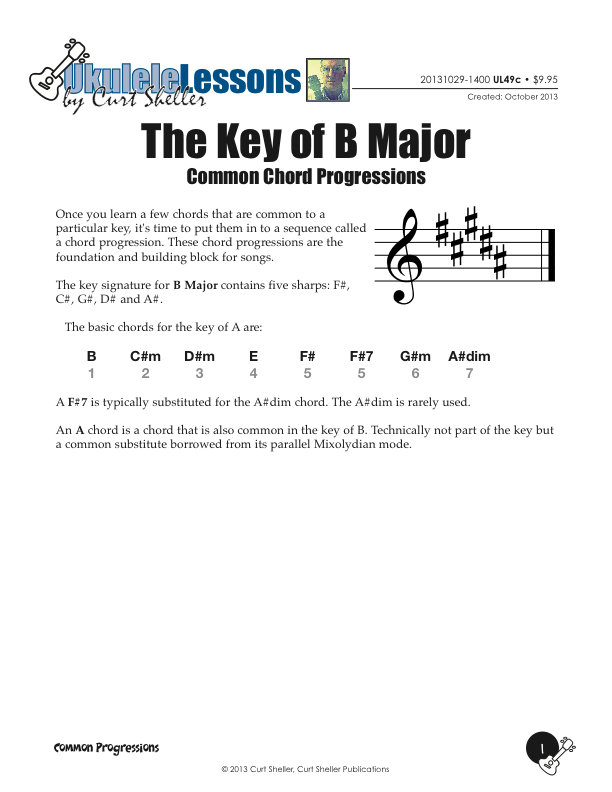
Common chord progressions for the key of B. Using the primary and seconday chords for the key explore these common chord progressions for the key of B.
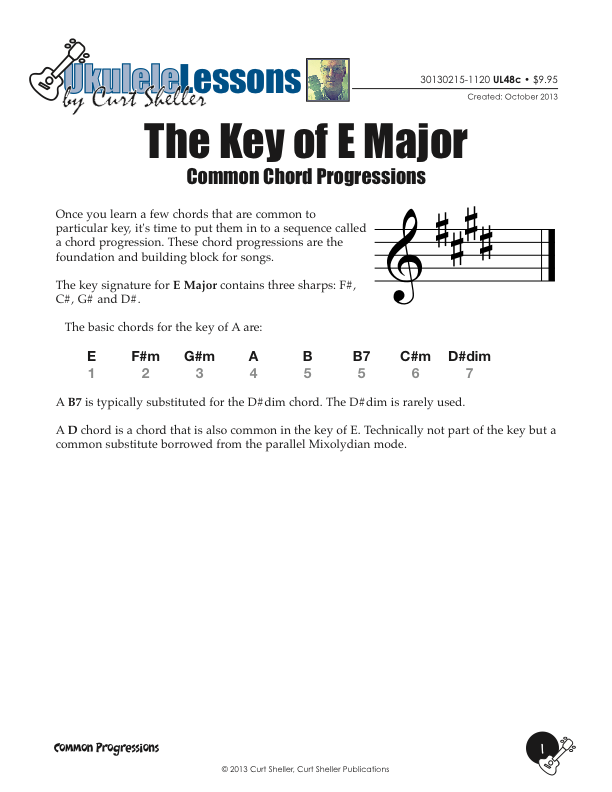
Common chord progressions for the key of E. Using the primary and seconday chords for the key explore these common chord progressions for the key of E.
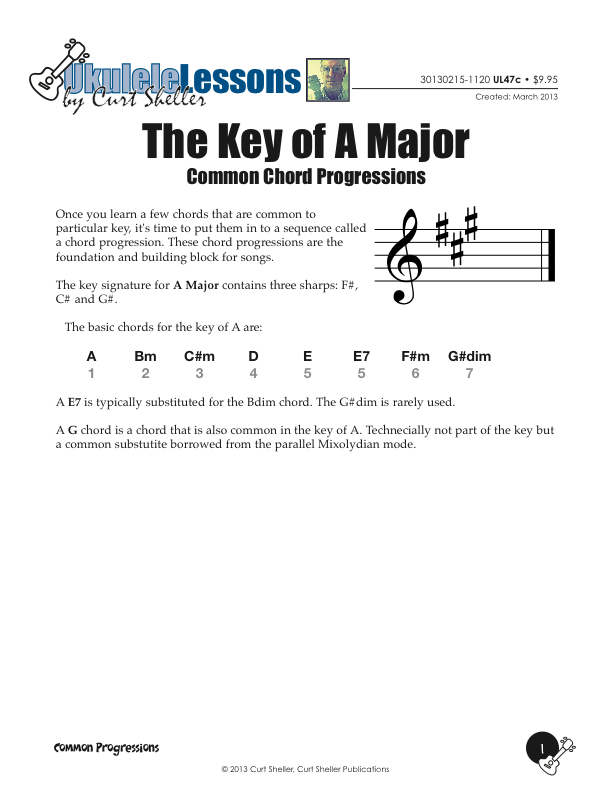
Common chord progressions for the key of A. Using the primary and seconday chords for the key explore these common chord progressions for the key of A.
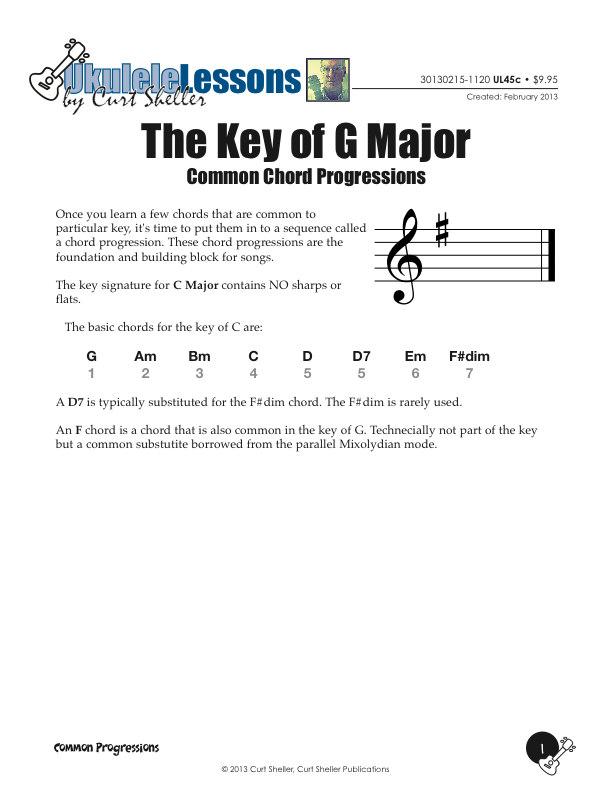
Common chord progressions for the key of G. Using the primary and seconday chords for the key explore these common chord progressions for the key of G.
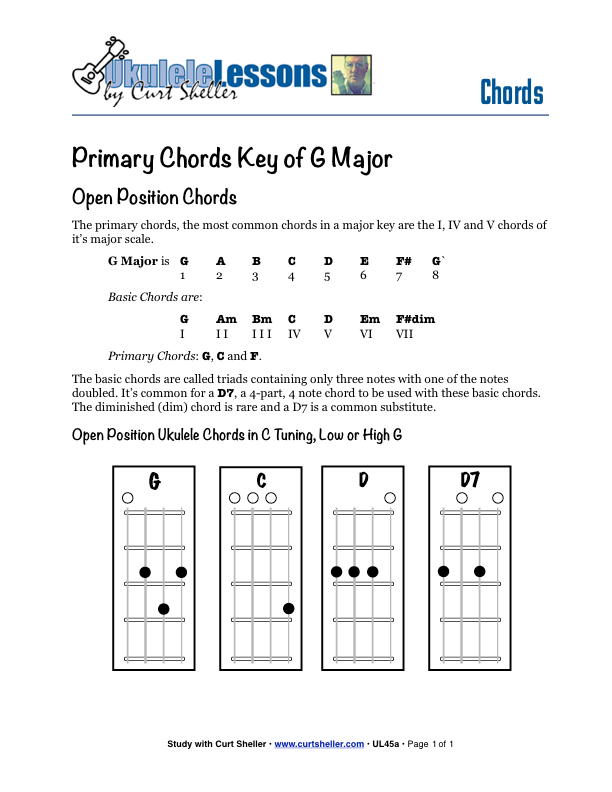
The primary chords for any major key are the I, IV, and V chords of its corresponding major scale. For G Major the primary chords are: G, C, D, and D7.

Common chord progressions for the key of F#. Using the primary and seconday chords for the key explore these common chord progressions for the key of F#.

Common chord progressions for the key of C#. Using the primary and seconday chords for the key explore these common chord progressions for the key of C#.
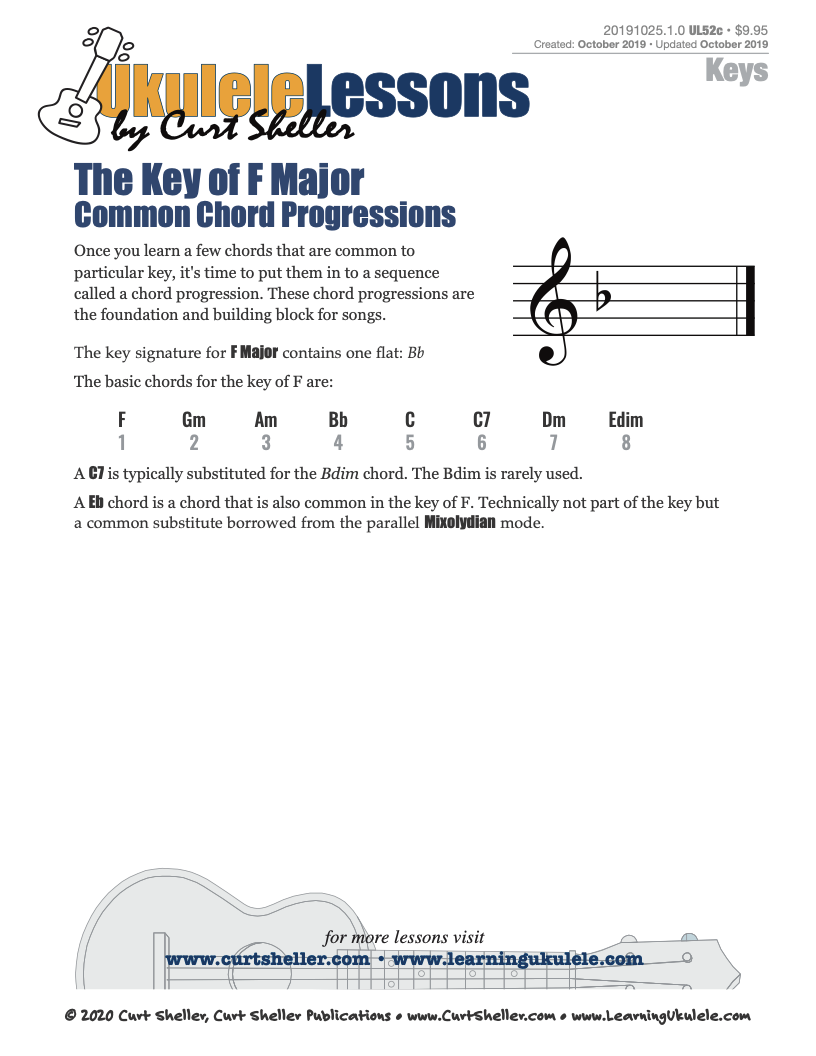
Common chord progressions for the key of F. Using the primary and seconday chords for the key explore these common chord progressions for the key of F.
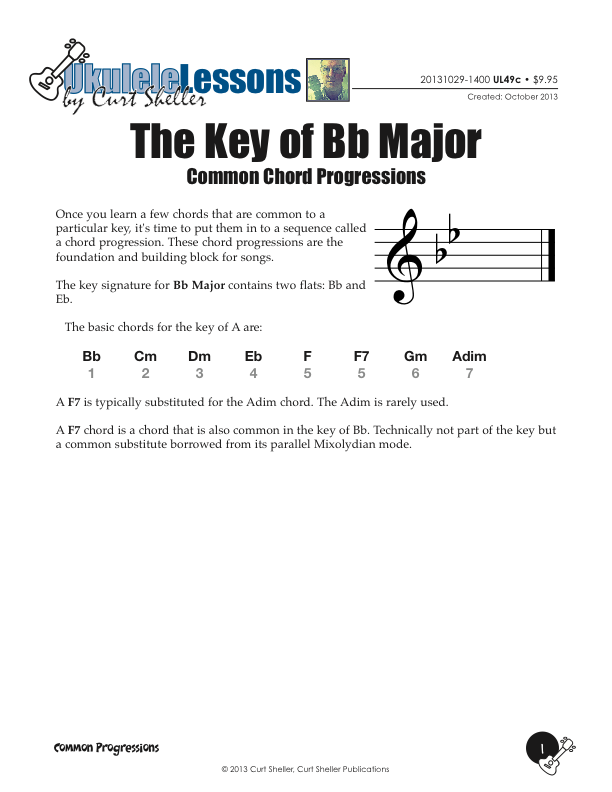
Common chord progressions for the key of Bb. Using the primary and seconday chords for the key explore these common chord progressions for the key of Bb.

Common chord progressions for the key of Eb. Using the primary and seconday chords for the key explore these common chord progressions for the key of Eb.

Common chord progressions for the key of Ab. Using the primary and seconday chords for the key explore these common chord progressions for the key of Ab.

Common chord progressions for the key of Db. Using the primary and seconday chords for the key explore these common chord progressions for the key of Db.

Common chord progressions for the key of Gb. Using the primary and seconday chords for the key explore these common chord progressions for the key of Gb.

Using the primary and secondary chords for the key explore these common chord progressions for the key of Cb. The key of Cb is a pretty rare key but actually an easy key to relate to the key of C. The key of C has ALL natural notes and the key of Cb has all flat notes for the scale: Cb Db Eb Fb Gb Ab Bb Cb`. The names of the notes are the easy part, the chords are typically played as movable form chords with only the Fb ( the enharmonic equivalent name is E ) available as an open string in the C tuning.
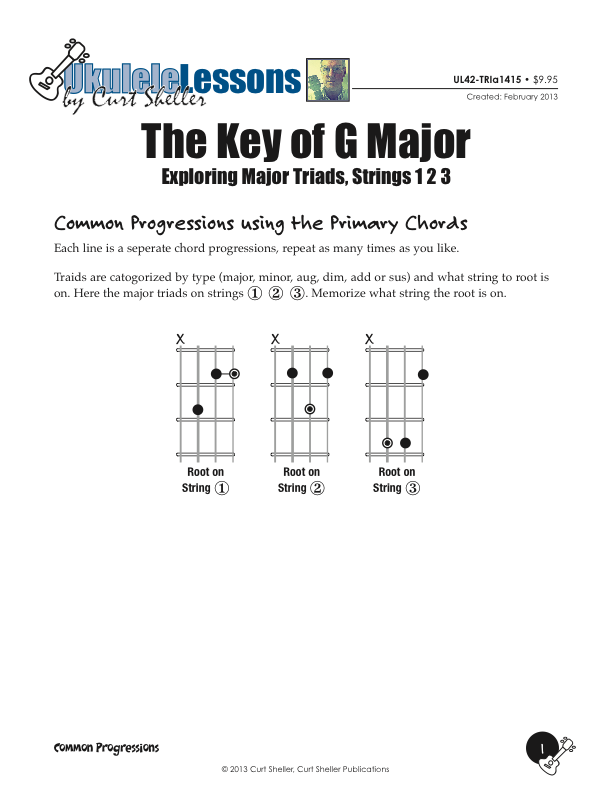
Exploring major triads using the primary chords of G major. Triads are one of the first chords that really bring to light the need to know the notes of the neck. This lesson shows the three voicings and the solutions for playing a common 1 4 1 5 progression using G, C and D triads on the string 1 2 3 set.

Playing chords, chord progressions, and songs by ear is all about getting your ear to recognize the sound of chords and chord progressions and just like melodies, train the fingers and the hand to follow your inner ear and play these chords, chord progressions, and songs on demand.

This is cool, fun song that is part of a lot of Hawai'ian musicians repertoire and a lot of fun to play. I was always honored to have Gordon Velasco ask me to sit in with him and Debi and this was always on of my favorites to play and jam on. Basically an Andalusian chord progression: Am G F E7.



.jpg)